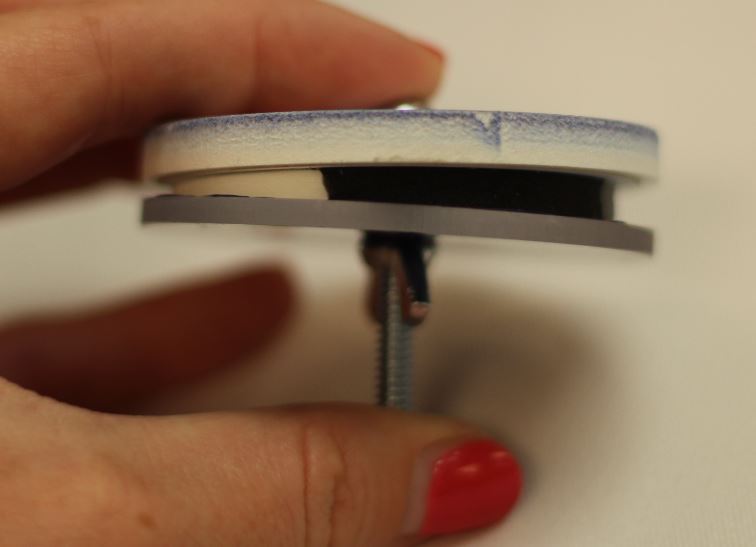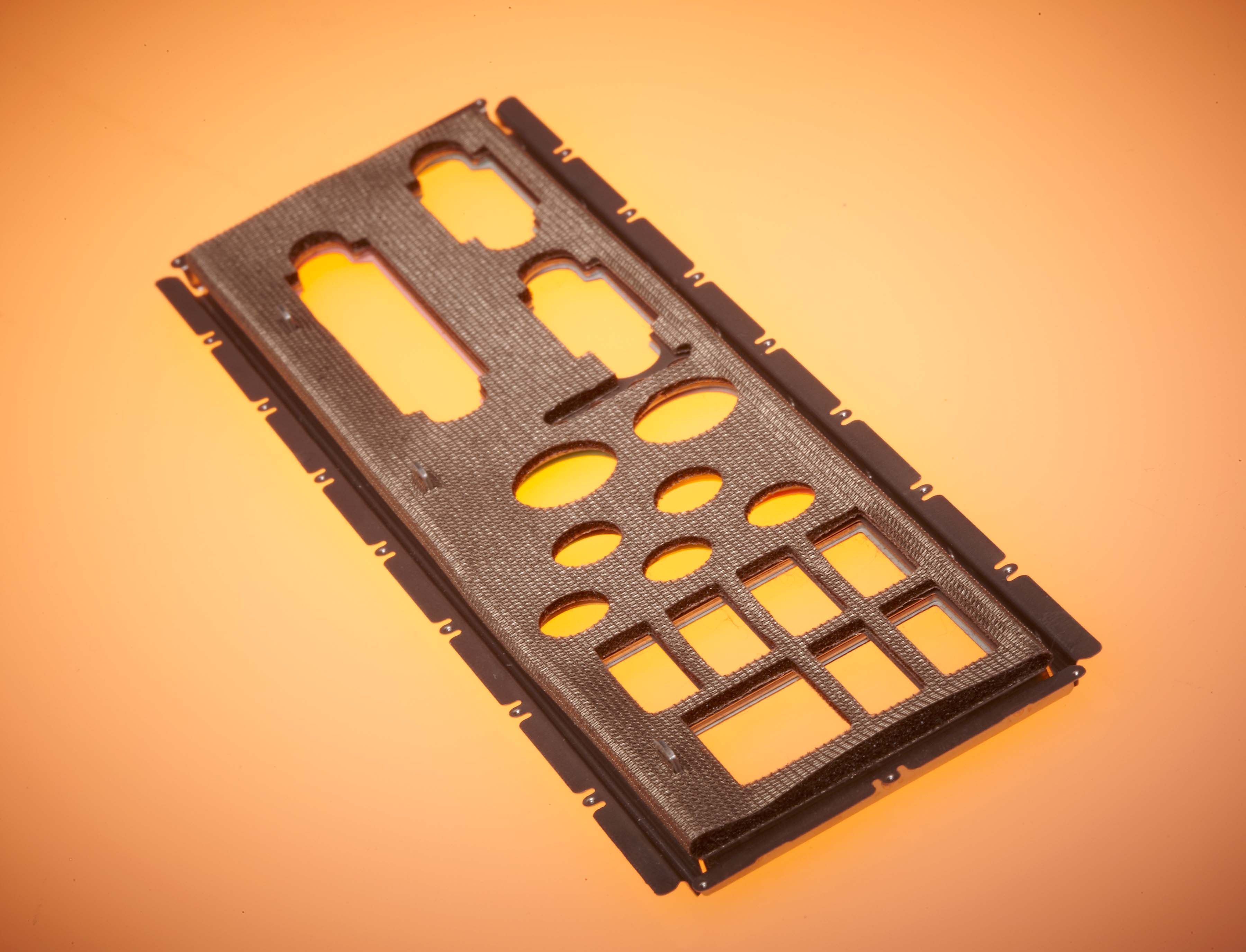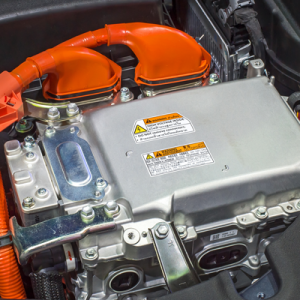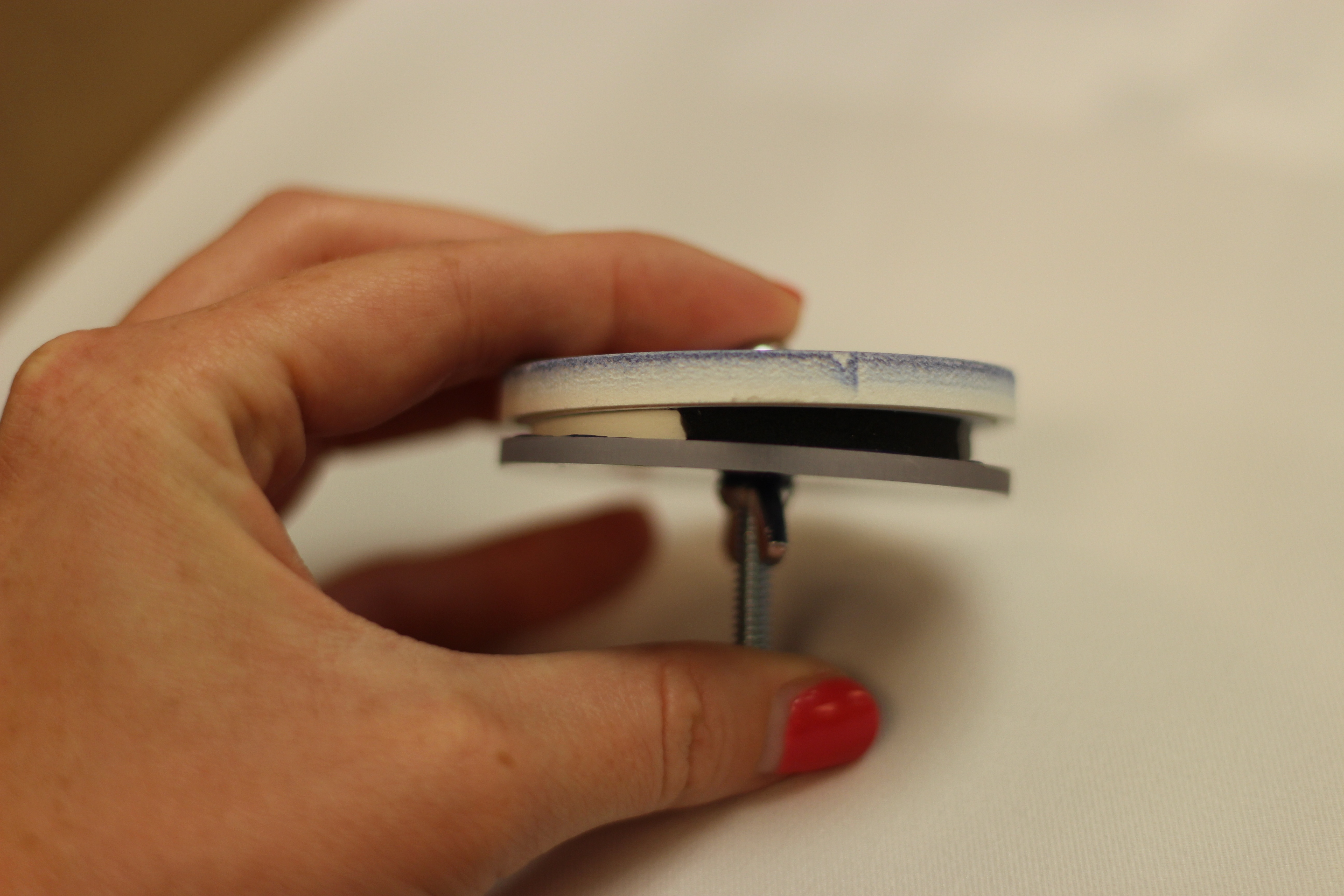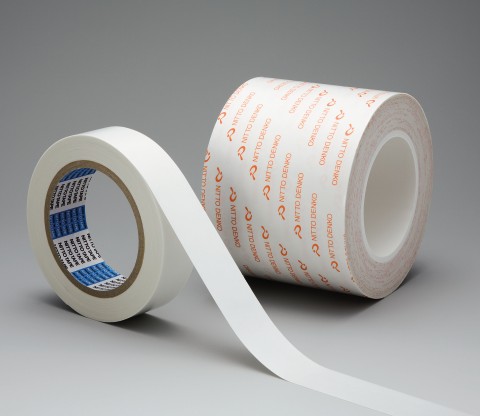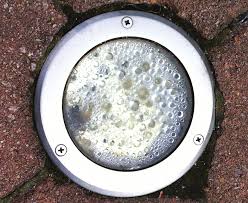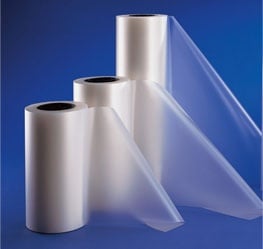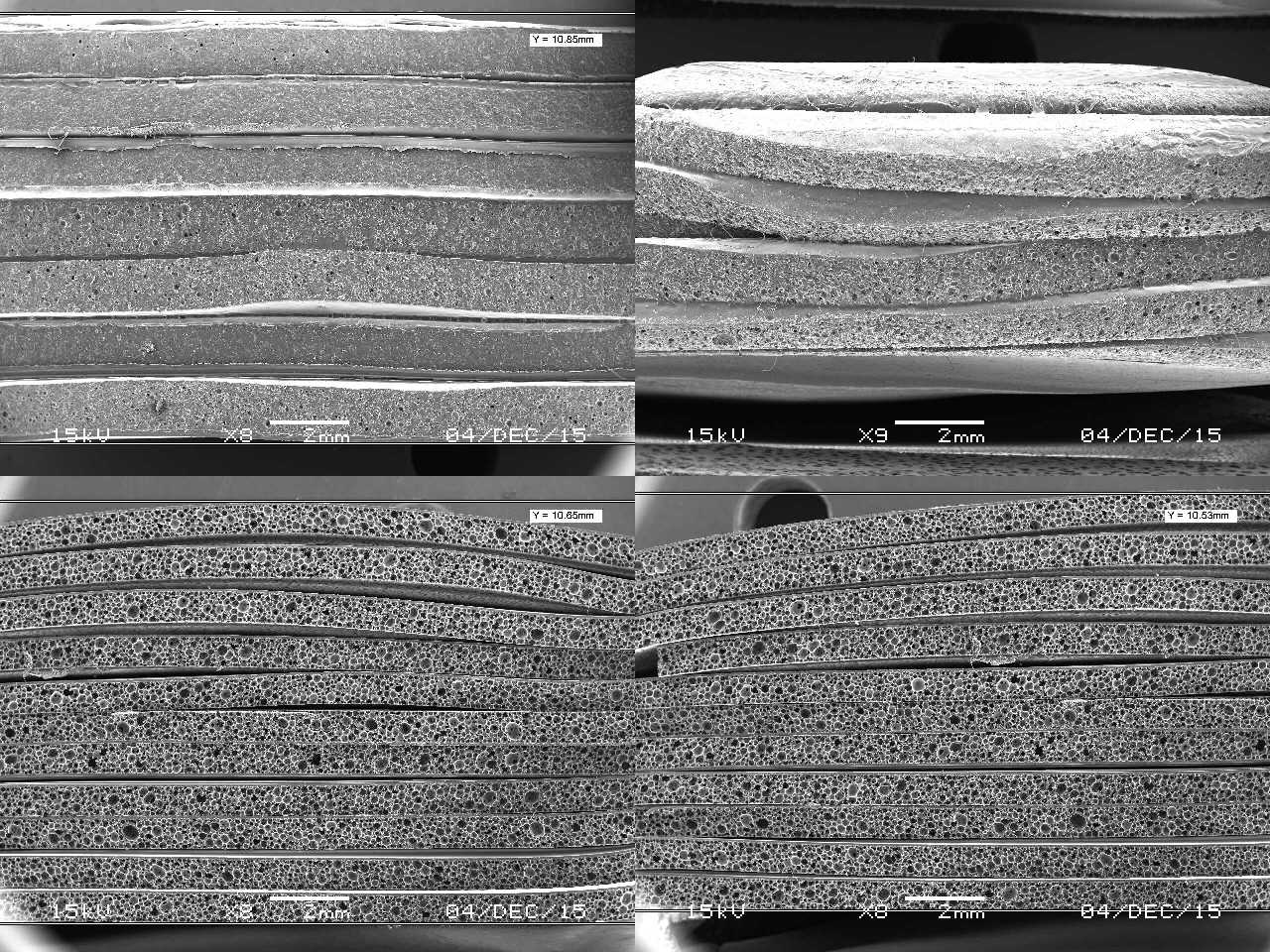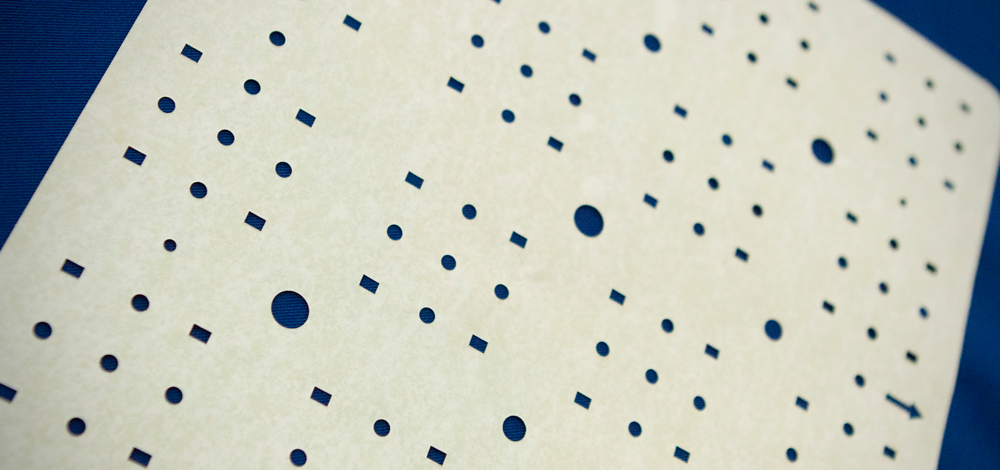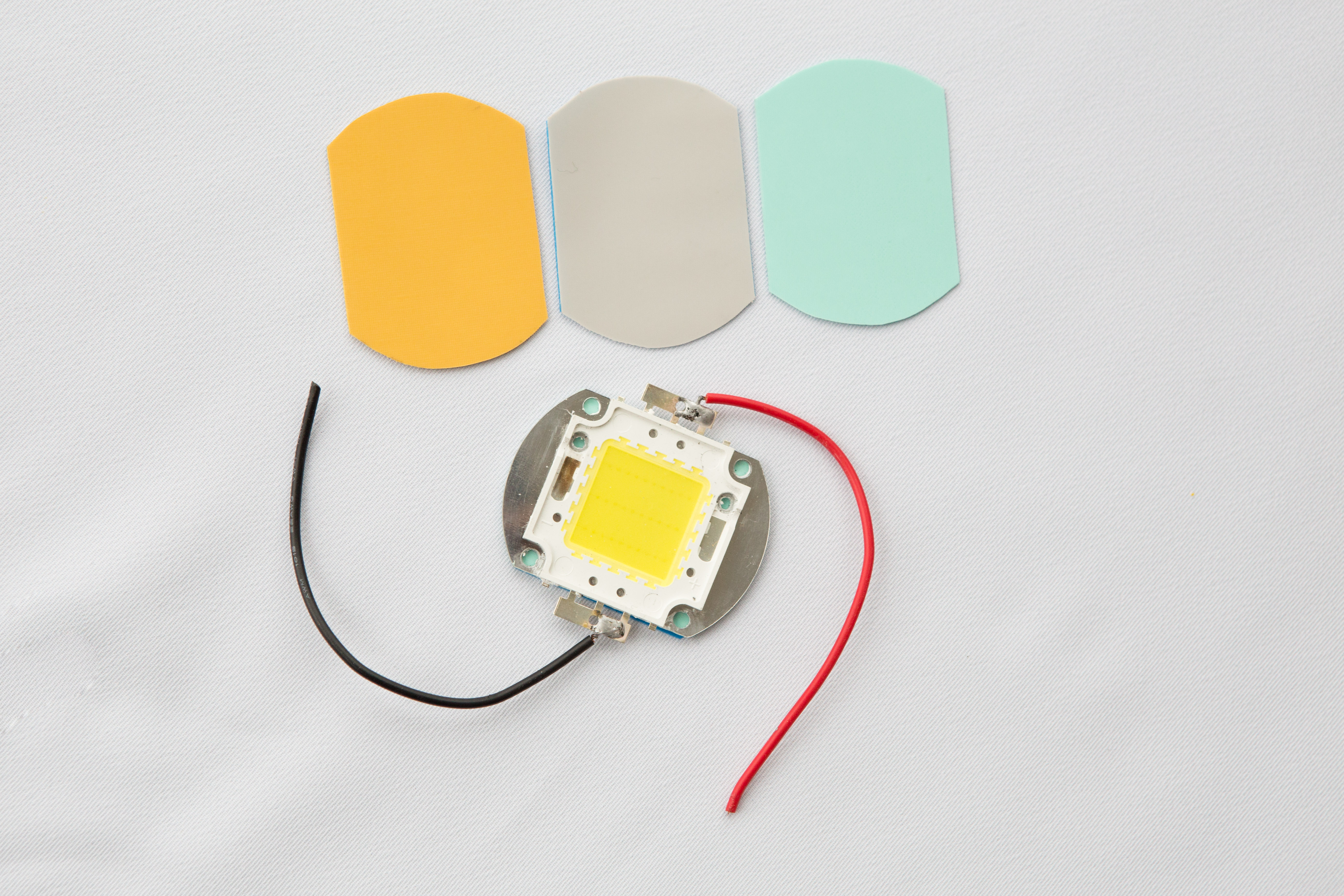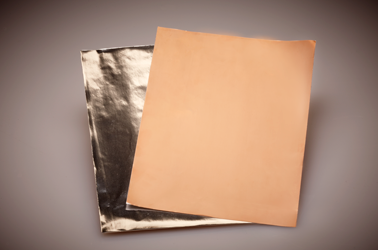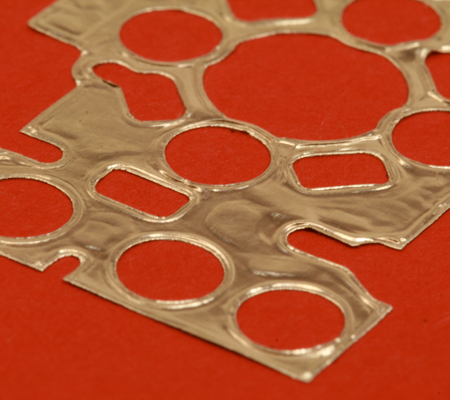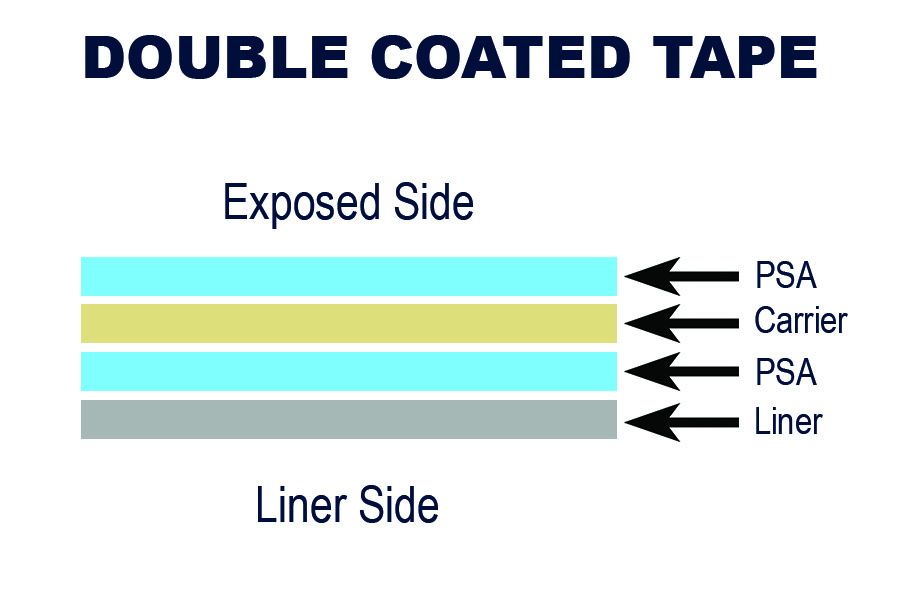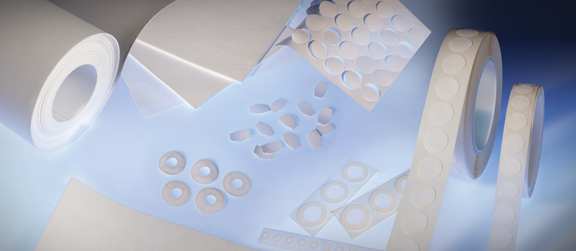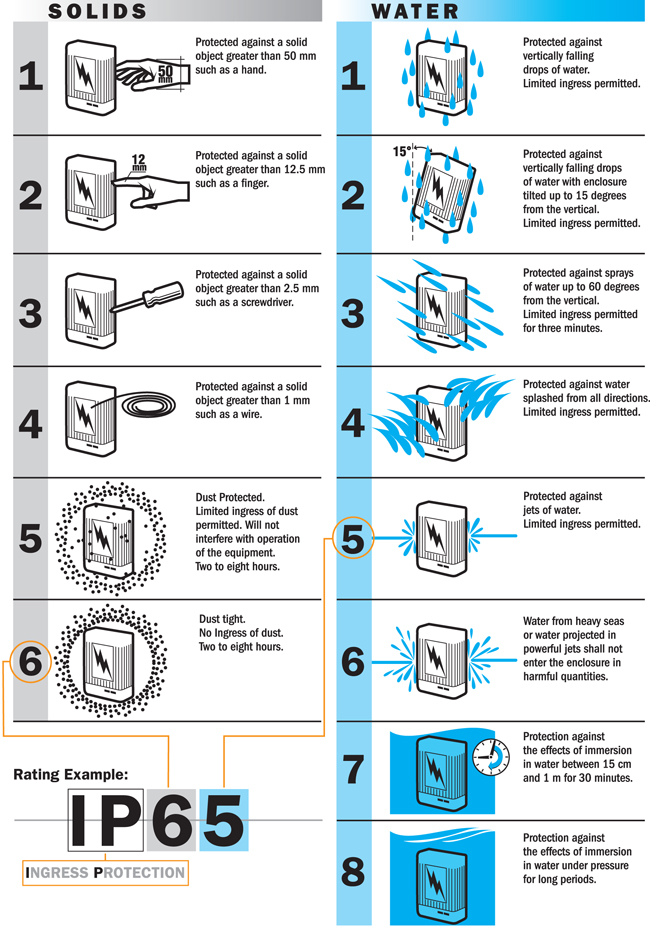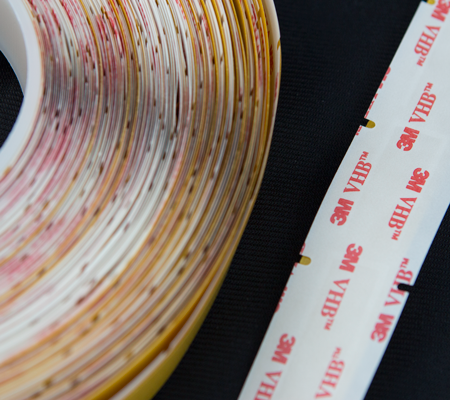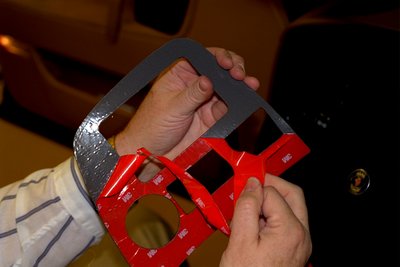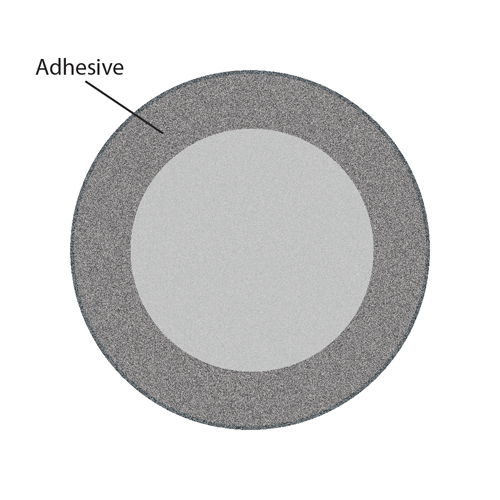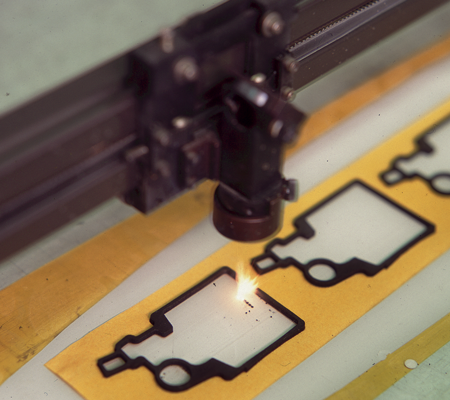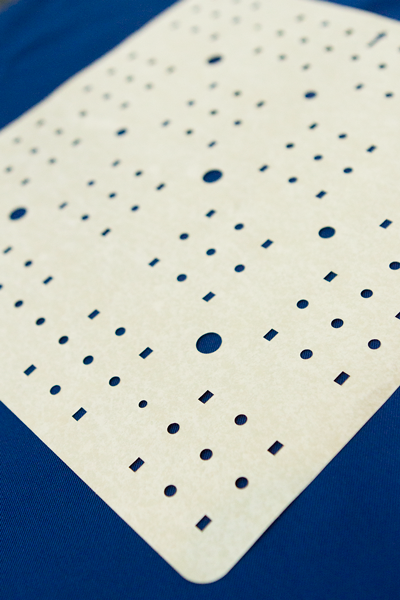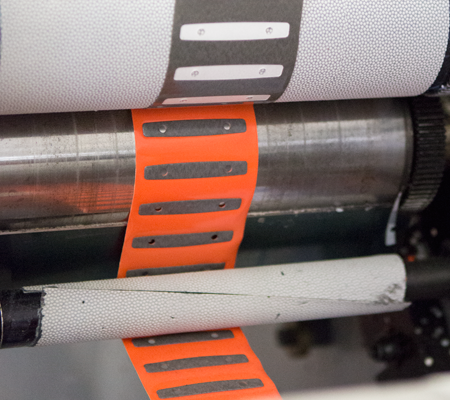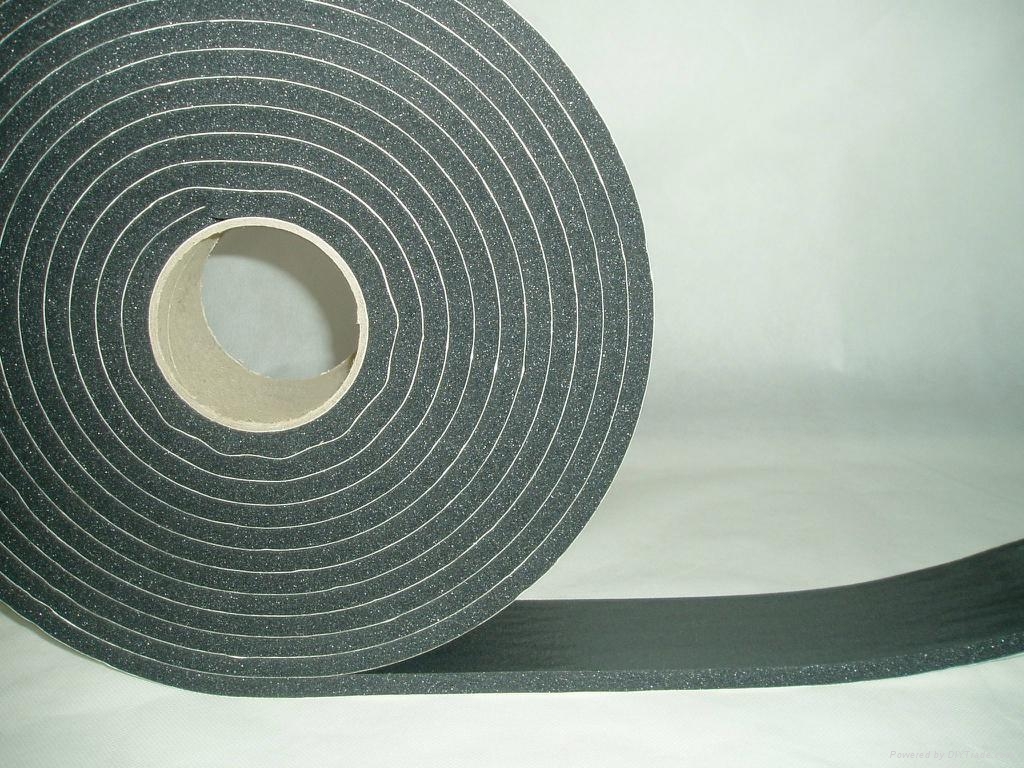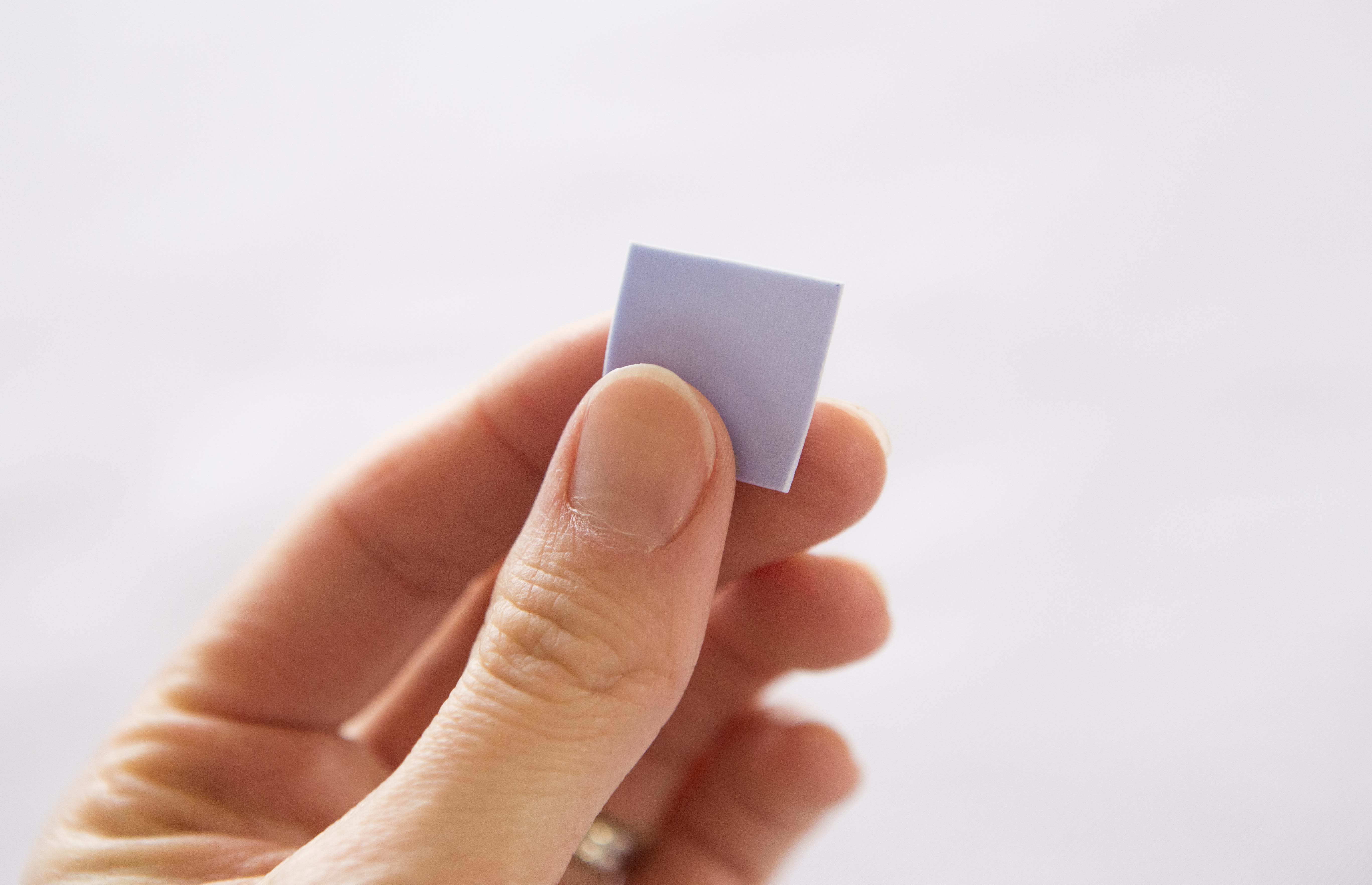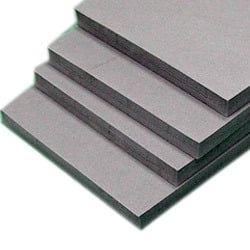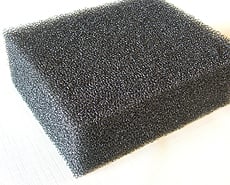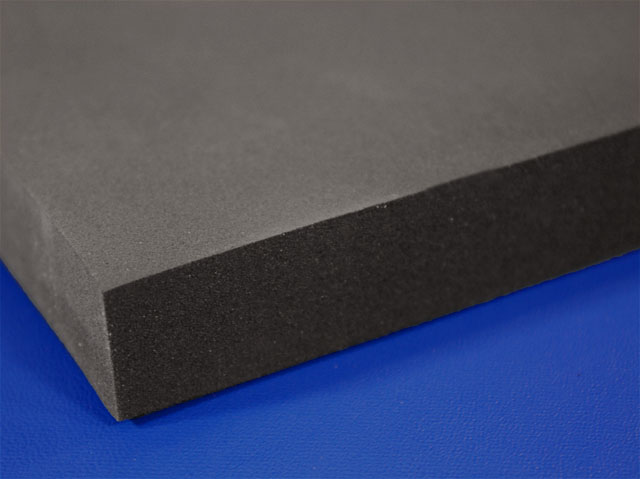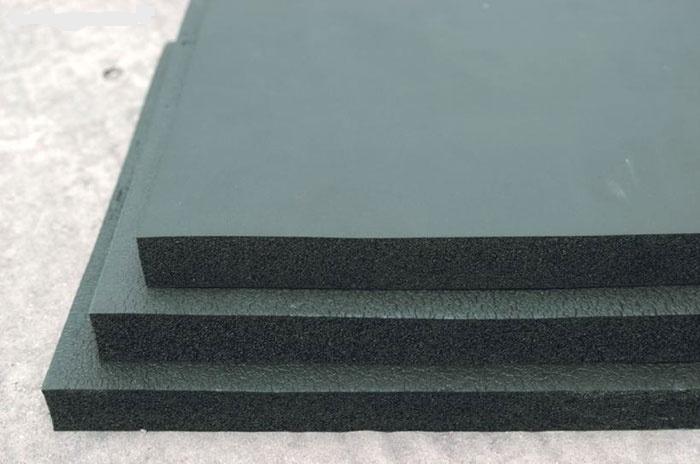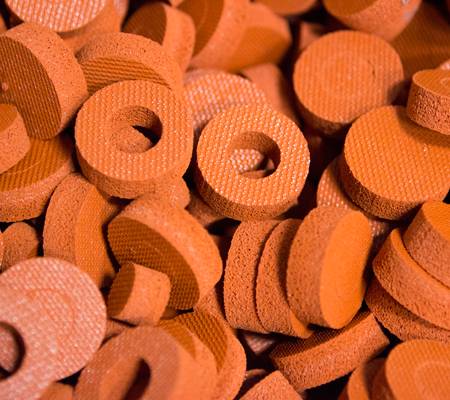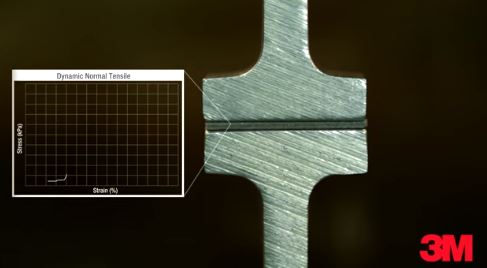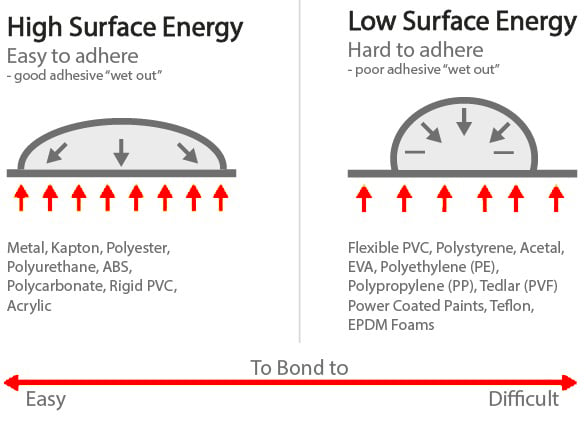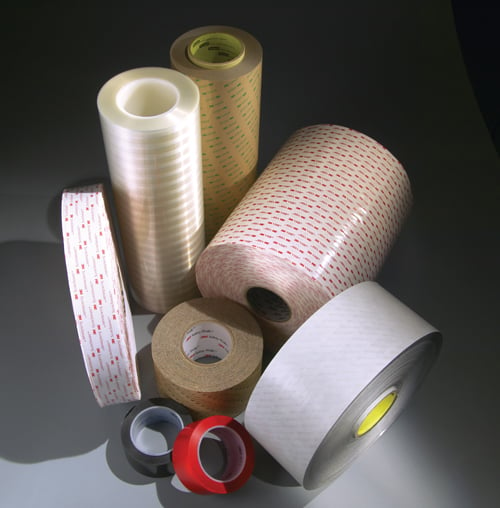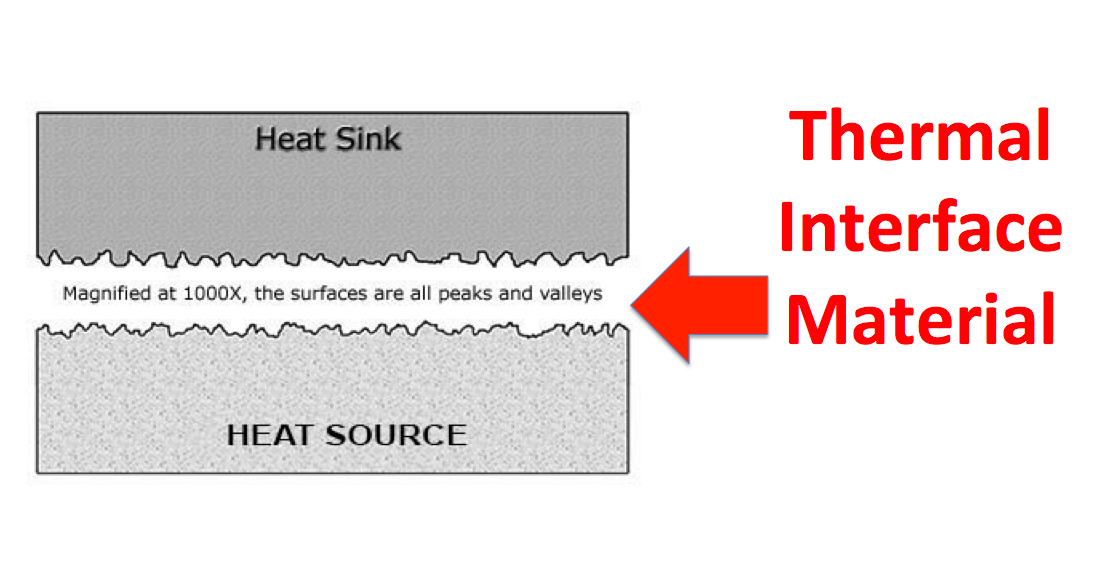The Application Challenge
One of the many markets Marian converts custom components for is the LED industry. For over a decade, customers have turned to LED lighting as an environmentally friendly solution with a longer service life than conventional lighting.
Keep reading to learn more about a customer that removed conventional bulbs from existing lighting structures and retrofit them with LEDs and see how Marian helped them come up with a custom die-cut solution to improve their assembly process.
Read More
Topics:
Thermal Management,
Manufacturing,
Material selection,
Die Cutting,
Application Story,
Thermal Pad,
Assembly,
Converting
Rogers Corporation’s PORON® 40V0 foam gives engineers a thinner, softer, and UL 94 compliant solution for gap filling and cushioning.
Unlike standard polyurethane foams, PORON 40V0 combines reliable flame resistance with enhanced compressibility in slimmer grades, making it ideal for space-constrained designs. It also meets strict environmental standards and minimizes contamination risks in critical applications.
Read More
Topics:
Thermal Management,
Foams,
Manufacturing,
PORON,
EV,
Battery,
Material selection,
Flame Barrier,
Automotive,
Sustainable Materials,
Rogers Corporation,
Data Center
As industries evolve toward smarter, smaller, and more connected technologies, enclosures are facing new challenges. Design engineers are under pressure to deliver lighter, thinner, and safer enclosures that protect sensitive electronics from harsh environments while still meeting demanding performance standards.
This shift is transforming how gaskets and seals are designed and what materials are being used across key markets such as electric vehicles (EVs), medical devices, energy storage systems (ESS), and data centers.
Check out the extended blog on the Rogers website, The Future of Sealing: How Tomorrow's Applications Are Changing, and the video below to see where enclosures are heading and what will be necessary by the teams designing these enclosures.
*Disclaimer: The Enclosure Institute™ is a free educational resource created by Marian, Inc. and Rogers Corporation to help engineers navigate enclosure sealing with expert guidance.
Read More
Topics:
Manufacturing,
PORON,
Vent Material,
Material selection,
Die Cutting,
Automated Assembly,
PTFE Membrane,
Gasket,
Assembly,
Enclosure Institute,
Seals,
Enclosures,
Rogers Corporation,
ePTFE
Effective venting is one of the most important yet overlooked aspects of enclosure design. Whether protecting sensitive electronics, automotive components, or sensor systems, proper venting ensures reliability, safety, and long-term performance. By understanding the role of a vent, how venting solution works, why they're necessary, and how to choose the right materials and designs, engineers can create enclosures that maintain functionality even in harsh environments.
Check out the extended blog on the Rogers website, How To Design Effective Enclosure Vents: Balancing Pressure, Moisture, and Protection, and the video below.
*Disclaimer: The Enclosure Institute™ is a free educational resource created by Marian, Inc. and Rogers Corporation to help engineers navigate enclosure sealing with expert guidance.
Read More
Topics:
Manufacturing,
PORON,
Vent Material,
Material selection,
Die Cutting,
Automated Assembly,
PTFE Membrane,
Gasket,
Assembly,
Enclosure Institute,
Seals,
Enclosures,
Rogers Corporation,
ePTFE
Gaskets and seals can be manufactured in a number of different ways, but which is the best form for your application? In our blog, "An Engineer's Guide: 6 Key Questions for Gasket Fabrication", we discussed a number of different processes that could be used to cut your custom gasket or seal like rotary die cutting, laser cutting, waterjet cutting, and more.
This Enclosure Institute™ content from Marian and Rogers Corporation focuses on the difference between die-cut foam gaskets and three other sealing methods: o-rings, cure-in-place (CIP), and foam-in-place (FIP) gaskets.
Check out a summary of our content below or read the full article on Rogers’ website.
Enroll in The Enclosure Institute™ to advance your sealing design expertise.
*Disclaimer: The Enclosure Institute™ is a free educational resource created by Marian, Inc. and Rogers Corporation to help engineers navigate enclosure sealing with expert guidance.
Read More
Topics:
Foams,
Manufacturing,
BISCO Silicone,
PORON,
Material selection,
Die Cutting,
Automated Assembly,
Gasket,
Assembly,
Enclosure Institute,
Seals,
Enclosures,
Rogers Corporation
Selecting the right fabrication process for custom seals and gaskets starts with answering a few critical design-for-manufacturing (DFM) questions. By addressing these factors upfront, design engineers can avoid costly redesigns, speed up production, and ensure that their parts meet application requirements. At Marian, our engineers use these questions (and more) to create a fabrication plan tailored to each project.
This guide is presented by the Enclosure Institute™. For a deeper dive, explore the extended blog on the Rogers website, Top 8 Best Practices You Need to Know for Enclosure Die-Cut Gaskets, along with the video below hosted by Marian's own Phil Taylor and Jimmy Budd.
In these resources, you'll learn how starting with the right gasket design can optimize geometry to balance sealing force, fasteners, and load distribution. You'll also see why selecting manufacturing methods that align with production scale is critical for efficiency. Assembly features such as pull-tabs, locating holes, and specialized adhesives help streamline installation and minimize errors. Finally, packaging and delivery strategies play an often-overlooked role in protecting gasket integrity while making assembly faster and more reliable.
*Disclaimer: The Enclosure Institute™ is a free educational resource created by Marian, Inc. and Rogers Corporation to help engineers navigate enclosure sealing with expert guidance.
Read More
Topics:
Foams,
Manufacturing,
BISCO Silicone,
PORON,
Material selection,
Die Cutting,
Automated Assembly,
Gasket,
Assembly,
Enclosure Institute,
Seals,
Enclosures,
Rogers Corporation
The Application Challenge
Marian's converting capabilities span across a very wide variety of industries. You may already know that we’re highly involved in the medical, battery, automotive, and consumer electronics industries (among many others), but you truly can find Marian parts all around you, even in the vending machines dispensing your favorite drinks and snacks.
Keep reading to learn more about a customer that manufactures and refurbishes beverage and vending machines and how they incorporated Marian custom die-cut components to improve the machines for a consistent user experience.
Read More
Topics:
Manufacturing,
Acrylic Foam Tape,
Material selection,
Die Cutting,
Application Story,
3M,
PSA,
Assembly,
Converting
Marian's preferred supplier partner, 3M™, recently announced a new low VOC adhesive transfer tape for automotive interior components.
Keep reading to learn more about the features of this transfer tape, the applications its best suited for, and how a converter part using this material can simplify your assembly processes.
Read More
Topics:
Manufacturing,
3M,
PSA,
Automotive,
Sustainable Materials
A seal’s true value isn’t in how it looks on day one, but in whether it still protects your enclosure years later under heat, moisture, and mechanical stress. This Enclosure Institute™ article breaks down five core tests engineers can use to validate long-term gasket reliability: compression set, stress relaxation, thermal cycling, chemical resistance, and IP ingress protection.
Check out the extended blog on the Rogers website, How To Validate Enclosure Seal Reliability Through 5 Tests, and the video below.
*Disclaimer: The Enclosure Institute™ is a free educational resource created by Marian, Inc. and Rogers Corporation to help engineers navigate enclosure sealing with expert guidance.
Read More
Topics:
Foams,
IP Rating,
BISCO Silicone,
CFD,
PORON,
Compression Set,
Material selection,
Die Cutting,
Ingress Protection,
Gasket,
Enclosure Institute,
Seals,
Enclosures,
Rogers Corporation,
Material Testing
Designing a dependable enclosure seal isn’t just about picking or designing a gasket, it’s about how that gasket behaves under compression, for the planned life of the device (hours, weeks, months, days, years, etc.), within your hardware’s mechanical limits. The latest article from the Enclosure Institute™ highlights four key factors that matter most: gap spacing, compression force deflection (CFD), material compressibility, and gasket width.
Check out the extended blog on the Rogers website, The Mechanics of Enclosure Seal Design: Gap Spacing, CFD, and Compressibility, and the video below.
*Disclaimer: The Enclosure Institute™ is a free educational resource created by Marian, Inc. and Rogers Corporation to help engineers navigate enclosure sealing with expert guidance.
Read More
Topics:
Foams,
BISCO Silicone,
CFD,
PORON,
Material selection,
Die Cutting,
Gasket,
PSA,
Enclosure Institute,
Seals,
Enclosures,
Rogers Corporation
Understanding how different foams degrade is critical to designing gaskets that deliver optimal performance for their intended lifespan in any application. Learn what “long-term” reliability means in real-world environments and how polymer degradation mechanisms impact sealing materials.
In this Enclosure Institute™ blog, Marian and Rogers Corporation explore the key factors contributing to foam material degradation, providing engineers with insights to design durable components that maintain reliable performance throughout the product’s operational life.
Check out the extended blog on the Rogers website, Expert Tips for Preventing Polymer Degradation in Enclosure Applications, and the video below.
*Disclaimer: The Enclosure Institute™ is a free educational resource created by Marian, Inc. and Rogers Corporation to help engineers navigate enclosure sealing with expert guidance.
Read More
Topics:
Foams,
BISCO Silicone,
PORON,
Material selection,
Die Cutting,
Gasket,
PSA,
Enclosure Institute,
Seals,
Enclosures,
Rogers Corporation
Material selection related to seal performance is highly application specific. When choosing a sealing material, it's important to first understand if your application will be used in a static or dynamic environment. This ensures the appropriate materials are being considered for a gasket that maximizes enclosure reliability while also preventing premature failure.
In this Enclosure Institute™ blog, Marian and Rogers Corporation break down the differences between a static and dynamic seal, the design implications, and the key material properties that matter most.
Check out the blog on the Rogers website, Everything You Need to Know About Static vs Dynamic Seals in Enclosures, and the video below. The video also dives a little deeper into open cell and closed cell materials, their performance characteristics, and the various testing methods to verify those characteristics.
*Disclaimer: The Enclosure Institute™ is a free educational resource created by Marian, Inc. and Rogers Corporation to help engineers navigate enclosure sealing with expert guidance.
Read More
Topics:
Foams,
BISCO Silicone,
PORON,
Material selection,
Die Cutting,
Gasket,
PSA,
Enclosure Institute,
Seals,
Enclosures,
Rogers Corporation
Adhesive selection can be challenging, and it’s even more difficult in applications that generate heat like electronics, batteries, and more where the risk of fire is present. You can find many flame-retardant pressure sensitive adhesives on the market, but flame-retardant doesn’t necessarily mean halogen-free. So, if there are available options, why should you consider choosing a halogen-free tape?
Keep reading to see what classifies an adhesive as halogen-free, why you might consider a halogen-free tape in your next heat-generating application and learn more about some of the many halogen-free tapes available from tesa®.
Read More
Topics:
EV,
HEV,
Material selection,
PSA,
Converting,
Sustainable Materials,
Electronics,
Tesa
Not all sealing failures can be seen with the naked eye. Sometimes, subtle design oversights, improper installation, or even the application's environment if not planned for correctly can quietly undermine your enclosure’s performance.
There's a lot more than just material selection goes into designing a successful enclosure. In this case study, we highlight how Marian and Rogers Corporation teamed up to solve a moisture intrusion issue in a digital intercom system after the original gasket designed by a competitor allowed a leak to damage internal electrical components and, ultimately, caused the devices to fail.
The blog on the Rogers website, What Good Sealing with the Right Partner Looks Like, and the video below walk through how the Marian team recommended materials that effectively sealed the touchscreen modules and also prevented the leaks that previously caused failure.
Disclaimer: The Enclosure Institute™ is a free educational resource created by Marian, Inc. and Rogers Corporation to help engineers navigate enclosure sealing with expert guidance.
Read More
Topics:
Foams,
BISCO Silicone,
PORON,
Material selection,
Die Cutting,
Gasket,
PSA,
Enclosure Institute,
Seals,
Enclosures,
Rogers Corporation
While you might think pressure sensitive adhesives (PSAs) are pretty straightforward, selecting the wrong for your enclosure application can create problems and compromise sealing performance long before final assembly takes place.
Learn the key features of each adhesive type in latest blog on the Rogers website, How to Choose the Right PSA for Your Enclosure Components, and the video below to get an idea of which adhesives perform well in different situations. Once you have an understanding, you can start designing more reliable sealing components for your enclosure applications.
Disclaimer: The Enclosure Institute™ is a free educational resource created by Marian, Inc. and Rogers Corporation to help engineers navigate enclosure sealing with expert guidance.
Read More
Topics:
Foams,
BISCO Silicone,
PORON,
Material selection,
Die Cutting,
Gasket,
PSA,
Enclosure Institute,
Seals,
Enclosures,
Rogers Corporation
In Part 2 of our gasket failure series, we shift from the discussion on material science & environmental factors to mechanical design & real-world installation. Even a high-performance gasket can fail due to poor geometry, fastener placement, uneven compression, lack of venting, or improper gasket placement altogether.
Find the latest blog on the Rogers website, 6 Reasons Why Gaskets Fail: Design and Assembly, and the video below to start designing more reliable sealing components for your enclosure applications today.
Disclaimer: The Enclosure Institute™ is a free educational resource created by Marian, Inc. and Rogers Corporation to help engineers navigate enclosure sealing with expert guidance.
Read More
Topics:
Foams,
BISCO Silicone,
CFD,
PORON,
Compression Set,
Material selection,
Die Cutting,
Gasket,
Enclosure Institute,
Seals,
Enclosures,
Rogers Corporation,
Kiss-Cut,
Collapsible Gasket,
Multi-Piece Gasket,
Puzzle Gasket
Even the best-sealed enclosure can fail if the gasket material isn’t up to the challenge.
They say every failure is a step toward success, but we say that failure can be completely avoided by asking the right questions and having a clear understanding of your application's use case.
Lucky for you, we've condensed the important information we've learned over the years to help you make sure your enclosure is properly design right from the start. Check out the latest blog on the Rogers website, 6 Reasons Why Gaskets Fail: Materials and Environment, and the video below to start designing more reliable sealing components for your enclosure applications today.
Disclaimer: The Enclosure Institute™ is a free educational resource created by Marian, Inc. and Rogers Corporation to help engineers navigate enclosure sealing with expert guidance.
Read More
Topics:
Foams,
BISCO Silicone,
CFD,
PORON,
Compression Set,
Material selection,
Gasket,
Enclosure Institute,
Seals,
Enclosures,
Rogers Corporation
From silicone to neoprene, each gasket material comes with trade-offs and will perform best in various situations, but how do you know which is best for your application and where should you start?
Have no fear, engineers! The Enclosure Institute™ has created a comprehensive guide on the Rogers website in the newest blog: Top 8 Sealing Material Options: How to Choose the Right One for Your Enclosure.
This blog that breaks down the key differences in compression set resistance, temperature range, chemical compatibility, and cost across eight popular gasket options. With this guide and the Sealing Checklist Workbook (available exclusively to Enclosure Institute™ registrants), you're one step closer to sealing excellence.
Disclaimer: The Enclosure Institute™ is a free educational resource created by Marian, Inc. and Rogers Corporation to help engineers navigate enclosure sealing with expert guidance.
Read More
Topics:
Foams,
BISCO Silicone,
PORON,
Compression Set,
Silicone,
Material selection,
Gasket,
Enclosure Institute,
Seals,
Enclosures,
Rogers Corporation
“If it doesn’t seal, it’s not really an enclosure.” This engineer-focused resource from the Enclosure Institute™, a collaboration between Rogers Corporation and Marian, Inc., highlights eight practical factors for designing effective, long-lasting gaskets and seals. You can read the full article on the Rogers website.
Disclaimer: The Enclosure Institute™ is a free educational resource created by Marian, Inc. and Rogers Corporation to help engineers navigate enclosure sealing with expert guidance.
Read More
Topics:
Foams,
IP Rating,
BISCO Silicone,
CFD,
PORON,
Ingress Protection,
Gasket,
Electronics,
Enclosure Institute,
Seals,
Enclosures,
Rogers Corporation
NEMA (National Electrical Manufacturers Association), UL (Underwriters Laboratories), CSA (Canadian Standards Association), & IEC (International Electrotechnical Commission)—if you’ve ever felt overwhelmed by enclosure standards, our third blog from the Enclosure Institute™ is your go-to resource.
With so many standards guiding performance, safety, and environmental protection, it can be difficult to know which ones truly matter for your application. Whether you're designing for industrial environments, outdoor use, or specialized equipment, understanding these standards is critical—and easier than you think.
Disclaimer: The Enclosure Institute™ is a free educational resource created by Marian, Inc. and Rogers Corporation to help engineers navigate enclosure sealing with expert guidance.
Read More
Topics:
Foams,
IP Rating,
BISCO Silicone,
PORON,
Ingress Protection,
Gasket,
Electronics,
Enclosure Institute,
Seals,
Enclosures,
Rogers Corporation
What exactly are enclosures—and why does sealing matter so much? In this foundational blog from the Enclosure Institute™, we break down the role of enclosures across a range of industries, from EV charging to medical devices.
Read More
Topics:
Foams,
EMI Shielding,
IP Rating,
LED Lighting,
BISCO Silicone,
PORON,
Medical Device,
Ingress Protection,
Gasket,
Electronics,
Enclosure Institute,
Seals,
Enclosures,
Rogers Corporation,
Data Center
Sealing challenges can make or break the performance of an enclosure. That’s why Marian and Rogers Corporation have teamed up to launch the Enclosure Institute™ —a free educational series designed to help engineers tackle real-world sealing challenges with confidence.
Read More
Topics:
Foams,
BISCO Silicone,
PORON,
Enclosure Institute,
Seals,
Enclosures,
Rogers Corporation
Digital displays are an integral part of modern vehicle dashboards, household appliances, consumer electronics, and more. In applications like thermostats, cell phones, smart watches, and vehicles, displays allow a simplified, interactive experience for users. To make these digital display assemblies, manufacturers require a variety of die-cut components that, when combined, come together to make an impressive display that provides extreme clarity and a user-friendly experience, which we highlight below.
Read More
Topics:
Thermal Management,
EMI Shielding,
LED Lighting,
Die Cutting,
3M,
Thermal Pad,
TIM,
Gasket,
PSA,
Assembly,
Thermal Gap Filler Pads,
Polymer Science,
Converting,
Films,
Electronics,
Thermal Gap Pad,
Tesa,
Displays
EMI and RFI materials play an important role in preventing interference to devices with electronic components, and as technology continues advancing, the materials used in these applications must also support these advancements.
Read More
Topics:
EMI Shielding,
Material selection,
3M,
Foil Tape,
Electronics,
Conductive Tapes
In the fast-paced world, electronics are now integrated into almost every aspect of human life. Solutions ensuring optimal performance and longevity are necessary to meet consumers’ expectations. Many converted electronic components are made using materials that address various challenges faced by electronics applications, including thermal management, electromagnetic interference (EMI), surface protection, and more.
Read More
Topics:
Thermal Management,
Foams,
EMI Shielding,
Surface Protection,
Vent Material,
Die Cutting,
Thermal Pad,
TIM,
Gasket,
PSA,
Films,
Electronics
As interest from consumers to purchase products that are sustainably sourced and manufactured grows, companies around the globe are modifying their practices to include measures and policies to reduce their carbon footprint.
Read More
Topics:
Foams,
Material selection,
PSA,
Sustainable Materials
What are Cleanrooms (Clean Rooms)?
Cleanrooms/clean rooms are controlled environments designed to maintain low levels of airborne particles and contaminants. They are used in a wide range of industries where cleanliness is paramount, including medical, electronics, biotechnology, display, aerospace, and more.
Read More
Topics:
Manufacturing,
Medical Device,
Die Cutting,
Wound Care Device,
Assembly,
Medical,
Converting,
Cleanroom
The rapid advancement of the electric vehicle (EV) market is no secret, and to keep pace with this progress, OEMs seek cutting-edge thermal management solutions that perform well and come at a reasonable cost.
Read More
Topics:
Thermal Management,
EV,
Battery,
Material selection,
TIM,
Thermal Gap Filler Pads,
Automotive,
Polymer Science,
Thermal Gap Pad
Combining Intricate Laminations to Create Multifunctional Parts
Electric vehicles (EVs) continue to experience a sharp growth trajectory, generating process advancements and additional application requirements and needs. Marian has developed improved solutions to meet the industry’s most critical necessities for battery longevity, performance, and passenger safety.
Read More
Topics:
Thermal Management,
EV,
Battery,
Die Cutting,
Thermal Pad,
PSA,
ITW Formex,
Assembly
At Marian, we've developed and mastered numerous die cutting methods for manufacturing custom gaskets, seals, filters, vents, shields, thermal pads, etc. for our customers.
Read More
Topics:
Manufacturing,
Die Cutting,
Laser cutting,
Rotary
The Basics of the Rotary Die Cutting Process
Rotary die cutting is a common process used to manufacture simple two-dimensional labels, but rotary die cutting is used for more than just labels. Marian uses rotary die cutting to manufacture complex custom 3D components with multiple layers of differing geometries used in some of your favorite everyday products.
Read More
Topics:
Die Cutting,
Rotary
Many wound care device companies start with an innovative idea. Turning that idea into a mass-produced product can be extremely challenging. This concept is familiar to KitoTech Medical, a Seattle-based medical device company that develops wound care products. Kitotech was founded by Ronald Berenson, MD. Dr. Berenson is a serial entrepreneur with over 25 years in biotech and medical device industry. Marian is proud to call KitoTech Medical a valued customer.
Read More
Topics:
Medical Device,
Medical PSA,
Skin-Contact PSA,
Wound Care Device,
FDA Registered
There are many EMI shielding materials to choose from when determining how to effectively control EMI within an electronic device. In this post, we focus on die-cut foil tapes for EMI shielding. Foil tapes with conductive adhesive provide effective shielding properties as the thin foil layer ensures good electrical contact with the component surface. Let's take a look deeper at EMI and why foil tapes may be the best-suited material for your application.
What is EMI and Why is it Important?
Electromagnetic interference is unwanted “noise” or interference in an electrical path or circuit caused by an outside source. EMI can be caused by natural or man-made sources and can cause electronics to malfunction or to completely stop working. Therefore, EMI shielding and grounding components are important pieces in the design of electronic devices.
Read More
Topics:
EMI Shielding,
Foil Tape
When designing a medical device, the device is the focus. It must be safe and effective. It also must be packaged!
Read More
Topics:
Medical Device
Marian is a converter of thin, flexible materials. Most often, these materials are supplied to us in a large roll format, sometimes called “master rolls” or “log rolls”. The materials are typically on a hard-fiber or plastic core.
As you can see on our Materials webpage, Marian converts a wide range of material types in a myriad of different thicknesses. These include pressure-sensitive adhesives and tapes, sponge and foam, rubber, plastic films of all sorts, filter fabrics, foils, and more.
Read More
Double coated foam tapes are a type of adhesive tape that is made of tacky adhesive coated on both sides of a foam core or carrier. DC foam tapes fill gaps and distribute stress uniformly over the bonded area. Depending on the specific tape, the result is a bond line that seals, cushions, and damps vibration, resists impact, withstands a wide temperature range, and provides good insulating qualities. Double-coated foam tapes are strong and durable.
Read More
Topics:
Acrylic Foam Tape,
Material selection,
Die Cutting,
3M,
PSA
The need for EMI gaskets is growing as more high-frequency digital electronics are introduced into our everyday lives. This includes technologies like 5G infrastructure, IOT (internet of things), and rapid advances in automobile technology and connectivity.
Read More
Topics:
EMI Shielding,
Gasket,
Grounding
Thermal Runaway Propagation Prevention with Thermal Barrier Materials
Hybrid and battery electric vehicles that use lithium-ion cells require these cells maintain specific ambient temperatures. "Thermal runaway" occurs as a result of the rapid rise in temperature within one of the battery cells.
One of the greatest challenges for battery design engineers is to manage heat. For this reason, batteries are designed with thermal management systems, like thermal gap pads and thermally conductive tapes, that provide different levels of protection, including cell-to-cell, module-to-module, and pack level.
Marian provides custom flexible die cut solutions that are incorporated into battery design at the cell, module and pack level to aid with thermal management. These die-cut parts are made with high temperature resistant materials (also known as flame barrier materials) that are designed to offer thermal insulation to delay the onset of thermal runaway.
Read More
Topics:
Thermal Management,
EV,
HEV,
Battery,
Flame Barrier
The majority of the die-cut parts manufactured by Marian include a Pressure Sensitive Adhesive Tape (PSA). PSA tape is thin flexible material coated with a thin layer of adhesive, making one or both sides sticky. By producing billions of adhesive-backed parts each year, it’s safe to say Marian has a lot of experience with this sticky stuff!
PSA tapes can come in various constructions, which offer different functionalities based on your application. There are double-coated tapes, single-coated tapes, and adhesive transfer tapes. Check out our blog post, Pressure Sensitive Adhesive Tape Constructions, to learn more about different tape constructions.
The first step is choosing the best PSA type and construction for your application (by the way, we can help with this! Download our ebook: 4 Questions to Ask Yourself when Selecting a PSA). An equally important step when utilizing a PSA in the assembly of your product, is the proper storage and proper application of the PSA. Missteps when storing and applying your PSA can lead to product failure.
Read More
Topics:
Acrylic Foam Tape,
3M,
PSA
Editor's note: As of 2024, 3M Healthcare is now a standalone company, Solventum. You can find more about the spin-off and how Marian is a Solventum Premier Converter here.
One of our top material suppliers, 3M, recently announced the release of their next generation of medical silicone adhesives, 3M Hi-Tack Silicone Adhesive Tapes. 3M 2480 is the first product to launch in this new portfolio. It is a single coated medical nonwoven tape with hi-tack silicone adhesive on a liner. The benefits of this exciting new material include:
- Longer wear-times (up to 4 days)
- Supports heavier devices
- Offers more secure adhesion
- Repositionable
Read the full press release from 3M here.
Read More
Topics:
Medical Device,
Medical PSA,
Skin-Contact PSA,
Silicone,
3M
In the 1960s, Dupont™ developed the versatile and high-performing Kapton® Polyimide Film. Since its introduction, designers have relied on Kapton® film because of its ability to maintain its electrical, thermal, chemical and mechanical properties at extreme temperatures. Kapton® polyimide films have been used in many advanced markets including, electronic devices, electric vehicle battery, aerospace systems, power transformers, and more.
Read More
Topics:
Insulators
Pull-tabs, extended liners and split liners are assembly aids. They make the process of removing the liner from a die-cut adhesive part much easier. When you work with Marian, we keep your manufacturing and assembly process in mind as we develop the solution. This process is known as DFM or design for manufacturing and is one big thing that differentiate Marian from other converters.
Our goal is to make handling, placement and assembly easier for you and your teams, offering you additional saving in labor and time spent. Once we understand how our part will be assembled into your product, we can often offer a variety of solutions. These solutions can include (but are not limited to):
- Part orientation / spacing on the liner
- Final packaging:
- Kiss-cut to a liner and wound onto a roll
- Singulated parts
- Kiss-cut to sheets and pads
- Perforated liner
- Modifications to the carrier liner for fixturing
- Pull-tabs, extended liners, split liners
In this blog post, we are going to focus on pull-tabs, extended liners, and split liners.
Read More
Silicone rubber materials and some plastic films have chemically inert and non-porous surfaces, which equates to low surface energy. This means they have a weak molecular bonding force making it difficult to create a bond with many pressure sensitive adhesives.
Read More
Topics:
Surface Energy,
Foams,
BISCO Silicone,
Silicone
Thermal gap pads are one common type of thermal management materials and are utilized in electronic devices within the interface, or gap, between a heat generating component and a heat sink. The heat sink or cooling plate is designed to conduct heat away from the heat generating component to keep it cool and running safely.
According to Parker Chomerics Thermal Management Engineering Handbook, the typical contact area between most semiconductors and heat sinks can be made up of 90% air voids! We also know that air is about 200 times less conductive than a 5 W/mK thermal interface pad. This is where the thermal gap pad comes in.
Thermal gap pads are made of soft polymer that flows into the air gaps in the interface to aid in the more efficient and effective conduction of heat.
Read More
Topics:
Thermal Management,
Thermal Pad,
TIM
Point-of-care and rapid diagnostic testing are increasingly important in the areas of disease detection, treatment monitoring, and preventative care. This market gained significant attention during the COVID-19 pandemic and has since become popular in helping patients diagnose other conditions from the comfort of their own home including variations of influenza and more.
It's imperative that components of these devices and test kits are reliable and of the highest quality, so material selection, precise manufacturing, and proper packaging are all extremely important.
Read More
Topics:
Foams,
Medical Device,
Medical PSA,
3M
Per the Rogers Corporation Website, Rogers “BISCO® HT-800 Medium Cellular Silicone offers the lightness of foam with the enhanced sealing capabilities of sponge rubber.” In this post, we'll dive a little deeper into this excellent material.
Read More
Topics:
Foams,
LED Lighting,
BISCO Silicone,
Silicone
Silicone Rubber, a "Low Surface Energy" Elastomer - What Does This Mean?
Silicone is a high-performance elastomer with the ability to withstand extreme temperatures, both high and low. It also naturally repels, which makes it an excellent choice for a water seal or a moisture barrier. However, this also makes silicone tricky to bond to other surfaces.
Read More
Topics:
Surface Energy,
Foams,
BISCO Silicone,
Silicone,
PSA
M
arian die-cuts millions of components containing 3M tapes. 3M die-cut tapes are used in countless applications across many industries. 3M offers one of the most innovative portfolios of tape products in the world including double-sided tapes, single-sided tapes, adhesive transfer tapes,
3M™ VHB™ tapes, and double-sided foam tapes.
While 3M tapes can be applied utilizing rolls of material, there are many scenarios where a die-cut component can greatly improve placement efficiency and accuracy.
Read More
Topics:
Acrylic Foam Tape,
Die Cutting,
Application Story,
3M
IP Rated Enclosures: Venting Solutions
Sensors, controllers, and other electronic elements are being integrated into devices across virtually every industry. Many of these products are made for use in conditions where they may be exposed to extreme temperatures, rain, wind, dust, and moisture. (See application story about "smart" shipping pallets linked at the bottom of this post.) Designing such products requires that the container or enclosure holding the electronic components be completely sealed. Exposure to harsh elements could cause a product failure.
Read More
Topics:
Manufacturing,
IP Rating,
Vent Material,
Automated Assembly,
Ingress Protection,
PTFE Membrane,
PSA
Custom Die-cut Parts for Automated Assembly
Among numerous assembly options, automated assembly is often the method of choice for many of our customers. Automated placement is used for projects with very high volumes where precise placement is critical. Automated assembly can also significantly increase assembly speed and efficiency.
Marian designs and manufactures custom components to fit seamlessly into our customers’ automated assembly process. We can modify many different aspects of the final part and packaging from liner type, part spacing and orientation, and quantity of parts per roll.
Read More
Topics:
Foams,
Die Cutting,
Automated Assembly
Improvements are being made to the lithium-ion batteries used in electric vehicles. Auto makers are developing more powerful lithium-ion batteries that have increased range and charge more rapidly. Along with these improvements, enhancing safety has becoming increasingly urgent for electric vehicle development.
As mentioned in our previous blog post, 11 Considerations when Selecting Thermal Interface Materials for Electric Vehicle Li-Ion Batteries, Li-ion batteries produce a significant amount of heat while in use and while charging. Along with the use of thermal management materials, placing protective engineered flame-retardant insulating materials between the components of the battery cell, module, and pack can offer additional thermal and electrical insulating protection. However, adding such materials can be challenging due to space and weight constraints.
In this post, we outline four materials that can enhance the safety of lithium-ion batteries used in electric vehicles. Some shared characteristics of these four materials are listed below.
- ultra-thin
- lightweight
- electrically and thermally insulating
- flame retardant
- can be die-cut and laminated with PSA
Read further for additional detail about each material.
Read More
Topics:
Thermal Management,
EV,
HEV,
Battery,
Material selection,
Insulators
Prototypes are typically produced in relatively small quantities and used by our customers to verify design, evaluate material choices, and build prototypes of their assembly.
Read More
Topics:
Manufacturing,
Die Cutting,
Prototype,
Laser cutting
Paint masking can be a tedious process. When masking an area with precision and over-masking is unacceptable, custom die-cut masks prove to be the best solution. Die-cut masks are pre-cut pieces of masking tape that are made to the exact size and shape of the surface area in need of masking. This video shows a direct comparison of the masking process with strips/knife versus masking with a die-cut part with a split liner. You'll see this demonstration proves that masking with a custom die-cut is easier, faster, more accurate, and safer.
Read More
Topics:
Masking,
Die-Cut Masking,
3M,
PSA
The Shore durometer (pictured right) is a scale for measuring the hardness of a material, such as rubber, plastic, thermal
plastics (TPE), and rigid plastics. The term "durometer" is often used to describe a material's rating on the scale, for example “this material has a durometer of 60.”
It's worth noting, there are a variety of durometer scales since elastomeric and plastic resins vary over a wider range than one scale can accommodate. Download our comparison chart to see how these scales overlap.
Durometer hardness is one of many physical properties considered when selecting a material for a specific application.
Beware of some common misconceptions. Durometer hardness is often inaccurately confused with the properties described below.
Read More
Topics:
Foams,
CFD,
PORON,
Elastomers,
Material selection
Materials for Battery Solutions - PORON EVExtend®
One of our preferred material supplier, Rogers Corporation, has released PORON EVExtend® polyurethane foam material. This material is ideal for battery pads for EV/HEV li-ion pouch cell batteries. The EXExtend 4701-43HBF offers an increased flammability rating of HBF, or HF1 (product dependent).
Read More
Topics:
Foams,
PORON,
EV,
HEV,
Battery,
Material selection,
Thermal Gap Filler Pads,
Thermal Gap Pad
From Locations Across the World, Marian Delivers a Successful Solution to HumanWare
It's difficult to prove the true value of working with a company that has a large global footprint. This application story demonstrates how Marian's global footprint paired with quick action by our material experts resulted in an effective solution for HumanWare, who was on a tight timeline.
In just 7 days from initial contact, Marian was able to work through the design and material selection processes, rapidly manufacture prototypes, and deliver a preliminary order of die-cut parts. Keep reading to learn more.
Read More
Topics:
Die Cutting,
Application Story,
Global Footprint
Currently, lithium-ion (li-ion) batteries are the most common type of battery used to power electric vehicles. Today's market is demanding that batteries charge faster and last longer. Because li-ion batteries produce significant heat when in use and charging, thermal management is critical. Excessive heat can cause irreparable damage to the battery.
Read More
Topics:
Thermal Management,
EV,
HEV,
Battery,
Material selection
Technological advances in properties of soft, flexible foam and elastomeric materials have continued. These thick, soft, flexible foams and elastomers like PORON foam, silicone foam, and more are ideal materials for sealing, gasketing and cushioning across many industries and applications.
They compress, form to irregular surfaces, bend, and flex within an application without damage or delamination, but from the perspective of the converter, these materials may also introduce challenges when trying to achieve the tight dimensional tolerances common in metal and plastic-molded parts.
Read More
Topics:
Foams,
BISCO Silicone,
PORON,
Elastomers,
Tolerance
Masking can seem like a "simple" process that is often accomplished with masking tape slit to common widths and applied by hand to protect surfaces from paint, contamination, or damage. Similar to surface protection tapes, masking materials are often discarded long before the final product reaches the customer. So what benefits are seen by changing from rolls of tape to die-cuts specific for your application?
Read More
Topics:
Surface Protection,
Masking,
Die-Cut Masking
Marian recently hosted a 30-minute webinar with tesa® that discussed many of their
surface protection films and tapes, including key features, and the benefits your company can see by implementing die-cuts into your processes and final products. Watch our webinar, and as an added bonus, request

and speak with one of our material experts.
Read More
Topics:
Surface Protection,
Webinar
Changes in altitude, humidity, temperature, and atmospheric pressure can cause the internal pressure of a sealed enclosure to increase or decrease significantly. Engineers integrate vents into the design of their enclosures to equalize the pressure and prevent problems such as condensation (and shorting of electronics), fogging, discoloration, leaks (failure of the seal), and other failures. Learn how the help of protective vents can keep these issues from arising.
Read More
Topics:
Vent Material
Many product manufacturers choose to protect critical product surfaces with custom cut surface protection films and tapes, but why invest in materials that may be disposed of before ever reaching the hands of the final customer? While this is sometimes the case, surface protection materials add more value to your products than you may realize.
Read More
Topics:
Surface Protection,
Films
When selecting a foam for your application, have you ever wondered if open or closed-cell foams are more effective? At Marian, we recommend materials based on a product’s application. This is certainly true when it comes to foam materials for use as gaskets. This means in order to recommend the best material, our first step is to understand the conditions, forces, stress and other requirements the gasket will experience in your application.
Read More
Topics:
Foams
We have published a new customer success story! In this story, the customer required a static seal for a navigation module that would be contained and used on the exterior of a recreational vehicle. The exterior navigation/infotainment module would be exposed to outdoor elements including extreme temperature swings, rain, wind, and dust. The gasket was required to reliably perform for the life expectancy of the class A RV. This could be more than 10 years! The customer came to Marian for a solution.
Read More
Topics:
Foams,
BISCO Silicone,
Silicone
Let's get straight to the point!
Here are 5 reasons you should be prototyping with Marian:
- Speed-to-prototype and material expertise is part of our culture and business plan. Our experts will start by consulting with you to understand your application and the design of your product. We will then recommend a few materials to test for your application. Provide us with a two-dimensional CAD file of your part, and our teams can quickly get to work on creating your prototype parts.
- We stock hundreds of materials that are readily available for prototyping. Having materials readily available allows us to quickly produce prototype parts. Check out our material data sheets page. We keep stock of most of these materials. Material Data Sheets
Read More
Topics:
Manufacturing
Ever wonder why hospitals, doctor’s offices, and other healthcare providers don’t just use duct tape for bandages, wound care, and device fixation? Well, there are many reasons, but first, try sticking it to your skin and peeling it off. The main reason is simple: duct tape does not use a medical grade pressure sensitive adhesive.
Medical adhesives that stick to the body must be skin-friendly, non-migratory, and have a variable degree of initial tack and peel adhesion. Ease of removal, breathability, and durability also differentiate medical adhesives from other types of tape.
Read More
Topics:
Medical Device,
Medical PSA,
Skin-Contact PSA,
Silicone,
Medical
The struggle between the world and electromagnetic interference (EMI) is endless. EMI consistently attempts to sabotage our most critical technologies in the aerospace, mass transit, medical, and military industries.
What is Electromagnetic Interference (EMI)?
EMI engages us through maneuvers such as radio transmitters, electric motors, power lines, fluorescent lights and computer circuits. Through these maneuvers, EMI generates electromagnetic disturbances, signals and emissions that cause undesired responses or degradation of performance in electrical and electronic equipment. This occurrence leads to system malfunctions and failures, which can threaten the performance of life support devices, military radio frequencies and aircraft flight controls – to name a few examples. Malfunctioning or failure of these types of systems, triggered by EMI, can be problematic, dangerous and life-threatening.
Read More
Topics:
Foams,
EMI Shielding,
PSA
Why is it so important that plastic injection molding companies provide value added services and secondary manufacturing services to their customers after molding their parts?
The answer is easy! Many end-customers of plastic injection molders are looking for vendor consolidation and supply chain simplification. They want to cut out and skip steps in their supply chain, sequentially helping to reduce costs and save time.
Read More
Topics:
Foams,
Manufacturing,
Acrylic Foam Tape,
PORON,
PSA
Emblem Adhesive Tape Solutions
Think about all the things an emblem is exposed to each day during its lifetime. Depending on their use, emblems have to absorb the shock of a car driving over a pothole, the blow of a boat sailing over a wave, the turbulence of a plane flying through a jet stream, and even the vibrations of a running washing machine.
On top of all those external forces, in many situations, weather conditions are also a major factor. It's no easy task for an emblem to hold its bond or evade cracks during hot summers, cold winters, and severe weather storms.
After all an emblem endures, you would expect it to fall off quickly, which it will, unless you use industry leading emblem adhesive tapes to create a strong bond. Using the highest quality attachment materials ensures an emblem will maintain its longevity and hold a strong bond.
Read More
Topics:
Foams,
Manufacturing,
Acrylic Foam Tape,
PSA
In this newly released application story, a global designer and manufacturer of critical intercommunication devices experienced a gasket failure allowing moisture to leak and compromise the internal components of their console. It's remarkable the amount of damage a single drop of water can do. Moisture often contains impurities and minerals that remain even after the water evaporates. Between the moisture and these remaining elements, the contamination can cause short circuits, corrosion, and mechanical problems. A malfunctioning device leads to recalls, replacements, and eventually a poor reputation. The company in this story did NOT want to deal with any of this.
The intercom console product was intended to be used in medical office settings. Cleanliness and sanitary standards were very important for the high-touch surface of this device. The console was sprayed with liquid cleaners often. The console housing required a reliable sealing gasket to keep moisture out.
Read More
Topics:
Foams,
PORON
Just about everything that has been engineered is likely to experience vibration. Unfortunately, it has been proven that vibration can be responsible for causing extreme damage to some applications. The source of vibration can come from impact, internal motors or external sources.
Read More
Topics:
Foams,
PORON,
Damping
Video Demo: Thermal Resistivity and Conductivity of Silicone Foam
Thermal resistivity and thermal conductivity can be two very important physical features of foam materials for certain applications. Most devices containing electronic components must be designed to deal with heat in one way or another. Electronic circuitry operates most reliably at lower temperatures. High operating temperatures decrease the service life of the device or module. It is critical for designs to either conduct or isolate heat away from delicate components to ensure ideal operating temperatures.
Read More
Topics:
Thermal Management,
Foams,
BISCO Silicone
When choosing a foam for a product design, one feature that should be considered is the compression set resistance of the foam. C-Set is one of the most important characteristics to consider, and this blog post answers three basic questions to explain why.
Read More
Topics:
Foams,
BISCO Silicone,
PORON,
Compression Set,
Elastomers,
Material selection
Silicone elastomers are used in several diverse applications and industries because of their many unique properties. Silicone materials' attractive features include low compression set at elevated temperatures, flexibility at low temperatures, hydrophobic characteristics, high dielectric strength, low flammability, and can be food grade compliant. It is also lightweight yet high performing which is ideal for extreme environments.
Read More
Topics:
Elastomers,
Silicone
Die-cut Components for Medical Devices
We believe that true stories can tell you more than any marketing materials that we create. That is why we are sharing two new case studies in this blog post. Both case studies explore die-cut solutions that Marian provided to medical device companies. Quality and reliability are critical in this industry. Additionally, assembly efficiency and cost savings are important to the success of the business. In these case studies, you will see that Marian is well equipped and prepared to meet the stringent requirements demanded by the medical device industry. Enjoy!
Read More
Topics:
Foams,
PORON,
Medical Device
As medical device designs trend toward including cutting-edge electronics technology and wireless capabilities, Electromagnetic Compatibility (EMC) is a growing factor in device design.
Read More
Topics:
EMI Shielding
Imagine going 65 mph in your vehicle while on a road trip. The road you are driving on is old, so your vehicle bobs up and down the many dips and divots, your speakers are loud and are causing your rearview mirror to vibrate, making it hard to see, and your moon roof has a roaring noise sneaking through the cracks.
These foul disturbances are examples of NVH, also known as Noise Vibration Harshness.
Read More
Topics:
Foams,
BISCO Silicone,
PORON
Marian sales engineers are experts in designing high quality parts for any small, complex applications. Below, you will find links to two of our newest success stories that highlight laminated foam materials in two very different markets (LED lighting and automotive). In both stories, you will find that Marian's team of experts worked closely with customers to design a unique part and provided exceptional material recommendations to create a winning solution. Sales engineers must be strategic in choosing materials to ensure that they meet all requirements of the design.
Read More
Topics:
Foams,
PSA
Marian has a brand-new demonstration piece to share with the world! Strategically named "Test My Memory," the demo illustrates the impact of compression cycling over time with 4 different foams. Neoprene, Polyethelyne, PORON Urethane, and BISCO Silicone are tested by being compressed for 48 hours.
Foam Material Compression
In the demonstration, you will see that certain foams depreciate as they take on impact over time, whereas other foams resist the compression set by returning to their original thickness. The material characteristic of being able to take a compression set, also called compression force defection, is extremely important in long-term sealing applications. The ability of the material to "push back" to fill in any potential gaps that would allow water or dust to pass through is critical. This makes such materials an excellent option for sealing gaskets. We wrote an entire blog post about compression force deflection, you can read it here: Compression Force Deflection in Foam Gaskets: A Critical Property
Read More
Topics:
Foams,
BISCO Silicone,
CFD,
PORON
Nitto TR Thermally Conductive Adhesive Tape Series
Nitto’s TR series is a must-have for thermal and electronic applications. The TR series features a selection of double-coated tapes including TR-5912F and TR-5925F. These tapes exhibit powerful adhesion and thermal conductivity which accounts for their strength and reliability. Nitto recommends replacing the use of a screw-in an LED or other thermal applications with these thermally conductive adhesives for the best performance. Using the tape method offers superior thermal conductivity performance, and can extend the life of your LED, compared to using the screw method.
Read More
Topics:
Thermal Management,
PSA
Pressure sensitive adhesives (PSAs) are defined as any transfer, single-coated, or double-coated bonding tapes that only require pressure in order to completely adhere and bond to a surface. One important component that single-coated tapes and double-coated tapes share is their requirement to have a tape carrier. Depending on the type of tape you're using, the carrier serves different purposes.
Read More
Topics:
PSA
3M™ has released a series of new attachment tapes for the automotive market with a goal to strengthen their offering in low VOC thin attachment tapes where increasing regulation and OEM/Tier suppliers are driving a larger need. VOC refers to the amount of volatile organic compounds. VOCs are inherently present in newly produced components for auto interiors, which are made of materials like rubber, plastic, foam, and leather. They contain additives that are especially volatile when vehicles are new. Automobile manufacturers have become increasingly focused on the air quality of the interior, making a push toward lower VOC emissions, which makes low VOC tapes appealing.
Here are 5 things you should know about 3M Low VOC Tapes:
Read More
Topics:
PSA
PTFE membrane vents are made of hydrophobic microporous materials. This amazing PTFE material is designed to allow air to pass through while acting as a firm barrier to water and dust.
Outdoor LED Lighting enclosures contain electronics assemblies that must be protected from the elements (rain, dirt, debris). As LED lights operate, they generate heat. As the enclosure heats up and cools down through the cycle of operation, the internal pressure changes. Without the ability to relieve this pressure, the enclosure can sustain damage and condensation can form. Both situations can be detrimental to the successful operation of the LED lighting system.
PTFE membrane vents are a cost-effective way to protect your LED product. They keep dust and liquids out of the enclosure and relieve positive pressure or negative pressure within the enclosure.
Read More
Topics:
IP Rating,
LED Lighting
What is a Light Shaping Diffuser?
Manufactured by Luminit - LSDs are light-diffusing films with patented holographic patterns embedded into optically clear polycarbonate or polyester sheets. These innovative materials homogenize and directionally shape light with high-transmission efficiency. Applications that could benefit from this technology are LED lighting, architectural lighting, recessed downlighting, signs & displays. Light-diffusing films are available with three types of angles: circular, elliptical, and linear.
- Circular spread a light source into a larger circular pattern, and for this reason, they are used widely across many industries.
- Elliptical diffuser angles include 80 x 50, and 60 x 10. Common applications include hallways and specialty lighting that highlights a specific area.
- Linear diffusers, typically 60 x 1 (60 along the width, and 1 along the length) are commonly used in applications where light must be diffused into a line (for example, a bar code scanner).
Read More
Topics:
Manufacturing,
LED Lighting
Compression Force Deflection
Applications that experience periodic compression cycling over time may require a gasket that is capable of compression rebound. In the event that your application uses a material that does not resist compression force, the material may depreciate over time. When your gasket has dwindled or has deteriorated from all of the periodic compression cycling, your gasket will become ineffective and will need to be replaced. In a perfect world, your gasket should rebound to fill any potential gaps. Using a material with great compression resistance will guarantee a long-term sealing performance that will work just as effectively each time you reseal your application.
Read More
Topics:
Foams,
BISCO Silicone,
CFD,
PORON
What is 3M™ FRB?
It is thin flexible insulation made primarily of inorganic materials that is easily converted. The 3M™ FRB barrier material provides very high flammability and ignitability resistance, excellent arc and track resistance, good dielectric strength, and good thermal performance to safely contain electrical hazards.
Read More
Topics:
LED Lighting
Outdoor LED lights are subject to a wide range of environmental elements and must be designed to withstand these hazards for the long life of LEDs. There are many components included in an outdoor lighting assembly, and one of the most important elements is a gasket. When choosing a material for an outdoor lighting gasket, it's imperative to understand the mechanics of an outdoor lighting fixture.
Read More
Topics:
LED Lighting,
Silicone,
Gasket
Thermally Conductive Materials in LED Assemblies
Although LEDs are considerably more efficient than traditional lighting forms, they do still produce heat. This heat can have an adverse effect on the LED and therefore must be managed to ensure the true benefits of this technology are realized. If excessive junction temperatures are reached, particularly above the maximum operating temperature of the LED (~120-150˚C), a non-recoverable effect could occur, leading to complete failure. Operating temperature is directly related to the lifetime of the LED; the higher the temperature, the shorter the LED life.
Read More
Topics:
Thermal Management,
LED Lighting
Platinum cure silicone materials can be an excellent material choice for your application. You may be familiar with peroxide cure silicones, the conventional method to cure silicone, which contains a catalyst biproduct that has a smell and contains industrial chemicals. The mechanism of a peroxide cure is a free radical cure that results in a number of different by-products. A post-cure is necessary to drive them off. While peroxide cure silicones are great solutions for industrial and environmental applications, health care products often require an ultra-clean material. This is where platinum cure silicone materials come in.
Read More
Heat Spreaders
As summer comes to an end, we bring you our final post in our Hot Summer Blog Series exploring Thermal Interface Materials. In this post, we briefly look at heat spreaders.A heat spreader is a heat exchanger that moves heat between a heat source and a secondary heat exchanger whose surface area and geometry are more favorable than the source. Heat spreaders conduct heat in the x,y, and z axes which spreads the heat to a larger surface area for efficient and effective heat dissipation. This heat dissipation keeps devices running at a safe operating temperature.
Read More
Topics:
Thermal Management,
Summer Blog Series
Phase Change Materials
This is the second post in our Hot Summer Blog Series about Thermal Management Materials. In this post, we will focus on phase change materials.
Read More
Topics:
Thermal Management,
Summer Blog Series
This is the kick-off to our Hot Summer Blog Series all about Thermal Management Materials.
Why focus on Thermal management Materials? Incredible technological advancements have been made over the past 30 years in electronic devices. Just look at the image below.
As devices have become smaller, thinner, and more powerful, the need for the efficient removal of heat has become critical to the reliability and longevity of the device. Heat is a normal by-product of electronics operation. Thermal Management Materials exist to aid in the efficient conduction of heat within these devices to keep them running at a safe operating temperature. There are many different types of Thermal Management Materials offering a range of conductivities, thicknesses, and softness. In this series, we will explore the different types, starting off with Thermal Gap Pads.
Read More
Topics:
Thermal Management,
Summer Blog Series
The use of pressure sensitive adhesives is growing rapidly in the industrial manufacturing market. The advantages of using adhesive tapes are clear: they are lightweight, clean, and safe. Marian has the converting capabilities to produce die cut tapes, which are cut to specific dimensions. Tapes are often combined with, or laminated to other materials such as foam or film to create a more dynamic die cut part.
Read More
Topics:
PSA
As explained in the previous blog post - IP Ratings Explained - an Ingress Protection (IP) Rating is a common international test method (IEC 60529) to rate enclosure protection from objects and liquids. IP67 refers to the most extreme IP rating certifying that the enclosure will protect against the entry of:
- dust (6)
- the effects of immersion in water to depth between 15cm and 1meter for 30 minutes (7).
In other words, IP67 means that the unit or enclosure can be dropped into a body of water up to a meter deep for half an hour without allowing the ingress of water or dust!
For more information about IP Ratings, and to download an IP Ratings Chart, visit our webpage: IP Rating and NEMA Rating Charts
Read More
Topics:
IP Rating
Ingress Protection (IP) Rating is a common international test method (IEC 60529) to rate enclosure protection from objects and liquids.
Why is an IP Rating Important?
UL, CSA and CE Mark Standards often require certified products to hold a specific IP rating. Some examples of such products include IT equipment, laboratory equipment, electronic measurement equipment, plus anything claiming to be "dust tight" or "water-resistant", etc.
These terms indicate that a device is able to operate successfully in harsh environments such as potentially wet and dusty conditions. The IP rating scale provides a range of two numbers that indicate the level of protection provided.
The IP Rating looks like this: IPXX
1. The first number indicates protection from solid objects or materials
2. The second number indicates protection from liquids
For example, an enclosure that is rated IP54 is dust-protected. It will allow limited ingress of dust with the operation of the equipment for 2 to 8 hours. The enclosure is also protected against water splashed from all directions; limited water ingress permitted.
Before choosing materials for an IP-rated enclosure, it's important to understand the conditions and forces your application will encounter.
Read More
Topics:
Foams,
IP Rating,
PSA
Die-cut foam tape can be an excellent choice for your bonding application. With help from our friends at 3M, here are the top 10 reasons to choose acrylic foam tape versus mechanical fasteners.
Read More
Topics:
Acrylic Foam Tape,
PSA
Sealing out moisture can be one of the most important design features of a product. Water ingress, even just a drop, can cause substantial and irreparable damage to electronics, sensors, and other sensitive components.
This is why we are excited to tell you about a new high-performance foam material from Rogers Corporation. The newest addition to the Rogers line of foam products, the AquaPRO™ family provides enhanced water sealing solutions. Material densities range from "soft" (41) to "very soft" (37). This new Poron formulation is available in a range of thicknesses.
Read More
What There is to Know About Tape Primers
3M recently launched two high-performance acrylic foam tape lines for the automotive market: EX4500 and PX5000.
3M tape primers are applied to the bonding surface prior to the application of the tape. Primers are often made of chemicals like isopropyl alcohol and promote and increase adhesion.
Read More
Topics:
PSA
Selective lamination, also known as zoned adhesive lamination, describes the process of laminating a selective pattern of PSA (pressure-sensitive adhesive) onto another material to achieve a specific function. Simply said, this process involves manufacturing a multi-layer part in which the layers have different geometries. This occurs through a process of conversion - laminating materials together, precisely die cutting those materials, and pulling away from the unwanted PSA material from the finished part.
Zoned adhesive patterns are often required for filter and venting die-cut components but are also common for foam components and often include a PSA layer.
As seen in the image on the right, this foam gasket is laminated with an adhesive and a mesh material. The mesh is cut to the full diameter of the gasket while the adhesive is cut to remove the middle. This selective lamination allows air and sound to flow through the center of the mesh while still allowing the adhesive to be applied securely.
Read More
Topics:
PSA
Tape for Permanent Mounting AND/OR Temporary Fixation. Is that possible!?
How can an adhesive tape have an extremely high bonding strength while also being easily removable? Seems improbable, right? Let us introduce you to the tesa® Bond & Detach series of stretch release tapes.
Read More
Topics:
PSA
Marian Europe opened its doors in 2014. Satisfying our customers is one of the three pillars of our quality policy, and one of the reasons we decided to open this location. This location will allow us to operate closely to key customers, providing top-of-the-line service and delivery.
Read More
Laser cutting is one of many manufacturing capabilities offered by Marian. Laser cutting is a technology that uses a laser beam to cut or etch the shape of a specific design. Laser cutting utilizes CNC (computer numerical control) and/or laser optics to precisely control the pattern being cut in the material.
Rapid Production
There are no tooling requirements or costs for laser cutting. We can utilize a CAD file (.dxf) to produce parts very quickly. If materials are in stock, we can produce parts within 24 hours. This can be very helpful during the prototype and design phases. We can utilize the laser the create small volumes of parts for testing and evaluation.
Read More
Topics:
Manufacturing
The 3M™ Flame Barrier FRB Series is thin, flexible insulation made primarily of inorganic materials and is used in thermal management applications. FRB provides very high flammability and ignitability resistance, excellent arc and track resistance, good dielectric strength, and good thermal performance to safely contain electrical hazards. When compared to other material options, FRB saves cost and weight in end-use applications.
This thermal management material is easily converted: slit, die-cut, and/or laminated to fit the requirements of your specific design.
Key Material Characteristics
Read More
Topics:
Thermal Management
What is Die Cutting?
DIE CUTTING, by simple definition, is the process of using a die to shear webs of low-strength thin materials, such as rubber, foil, cloth, paper, films, pressure-sensitive adhesive tapes, and foam. Commonly produced items include gaskets and labels.
Worldwide, Marian has one of the largest "fleets" of die cutting machines. Our highly trained design, electrical and mechanical engineers manufacture our die-cutting equipment in-house in two well-equipped machine shops. We have been die cutting for over 50 years. We are very proud to be industry experts and offer our "die cutting 101" below.
Read More
Particle-filled silicone are elastomeric compounds that combine the advantages of silicone with electrical properties of metals. Conductive silicone materials can include the following filler materials: nickel, graphite, silver, copper, and aluminum.
Particle-filled silicone materials provide shielding against electromagnetic interference (EMI) and radio frequency interference (RFI). Silicone in itself boasts a number of tremendous properties, including high performance at extreme temperatures (-50°C - 350°C), durability and abrasion resistance, chemical stability, and electrical insulation. This combination of features makes particle-filled silicone materials ideal for EMI seals and gaskets in a range of applications and industries, including the demanding applications of the military and aerospace industries.
Some designers have concerns about using particle-filled silicone. Silicone has desirable material properties, but loading a high percentage of particle filler into the rubber in an effort to increase conductivity can result in negative tradeoffs. Typically, industry professionals worry that particle filled electrically conductive silicone will exhibit the following negative material features:
- too hard
- too brittle
- too expensive
- have long lead times
- limited by mold size dimensions
- not thin enough for newer, thinner designs
Read More
Topics:
EMI Shielding
PVC (Vinyl) Foam is the last foam variety that we will explore in our blog series "Foams for Low Clamping Force Seals". Polyvinyl Chloride (PVC) Foam is a lightweight closed-cell foam material. It is often used for sealing out water, dirt, and air. It resists weathering and is often laminated with adhesive to create a dynamic foam tape.
Read More
Topics:
Foams
Within electronics assemblies, thermal gap pads and thermal grease are utilized to fill in gaps between a heat-generating component and a heat sink to create a clear pathway for heat to escape, keeping the device running at an optimal temperature. So which thermal interface solution is right for your application? To aid in your decision, we list a few pros and cons to both thermal gap pads vs. thermal grease.
Thermal pads
Thermal pads, also known as thermal gap fillers and thermal gap pads, are a pre-formed rectangle or square of solid material. Thermal gap pads are often made of silicone or acrylic that contains a conductive filler. The advantages of thermal gap pads are that they have excellent dimensional stability, which makes them easily die-cut to achieve a consistent shape with each pad. The electronics manufacturer knows exactly what they are going to put into each assembly. The solid thermal gap pads are easy to handle, mess-free, and simple to install, leaving less room for assembly error.
Want to learn more about thermal gap pads? Check out this blog post: The Best Thermal Gap Pad for your Design
Read More
Topics:
Thermal Management
XLPE Foam or Cross-linked Polyethylene Foam is the next material we will explore in our blog series, Foams or Low Clamping Force Seals. XLPE Foam is an extremely fine closed-cell material formed of polymers or molecules that are chemically bonded together (cross-linked). The strength of these microcellular molecule bonds is reflected in the strength of the material. XLPE foam can stretch, bear loads, and return to its shape. It works well in insulation, gap filling, and gasket applications that require thicker foam. It can also be used for packaging and medical device packaging. It can be made in a variety of colors, the most common being black, white, and gray.
Read More
Topics:
Foams
Light density polyester and polyether urethane sponges and foams have an open cell structure. The evenly spaced structure of these materials and a high proportion of open cells make them suitable for an infinite number of applications. The open-cell structure makes it highly flexible and conformable compared to its closed-cell counterpart.
Check out a related blog post: Open-Cell or Closed-Cell Foam, Which is Best?
Read More
Topics:
Foams
As we explore different categories of foams that are used for Low Clamping Force Seals in this blog series, we move to Closed Cell Neoprene and Sponge Blends. As stated in the previous post, closed-cell sponge and foam materials do not allow air and moisture to pass through, making them good materials for general sealing and gasketing applications. Keep reading for additional features and benefits of these materials.
Read More
Topics:
Foams
What is Closed Cell EPDM Sponge?
Closed Cell EPDM Sponge is the third material we will explore in our blog series: Foams for Low Clamping Force Seals. EPDM stands for Ethylene Propylene Diene Monomer. "Closed Cell" describes the material at a microscopic level. The material is made with tiny bubbles that are inflated with gas, resulting in a closed cell structure that will not allowing moisture to pass through. This is what makes this material excellent for sealing and gasketing. EPDM is commonly used in the automotive and construction industries for various seals and gaskets due to its excellent environmental factors such as UV, Ozone and weathering. When comparing EPDM to Silicone, EPDM falls short when it comes to temperature resistance.
Features and Benefits of Closed Cell EPDM Sponge
- Non-crystalline material. Contains no plasticizers that can migrate and lead to premature membrane failure.
- Can be formulated in a variety of combinations with other polymer modifiers.
- Performs well in the -40°F to 175°F temperature range.
- Excellent moisture resistance, does not absorb fluids easily
- Used in many applications that require water, UV, ozone, or indirect sunlight resistance (superior to neoprene in this regard)
- Does not meet UL flame rating without additives and will not withstand oil and fuels.
Read More
Topics:
Foams
We are continuing with our blog series: Foams for Low Clamping Force Seals. This week we will review the features and benefits of Microcellular Urethane Foam. Along with the many benefits this foam offers for low clamping force seals, it die-cuts cleanly and adheres to a broad range of pressure sensitive adhesives.
Read More
Topics:
Foams
Adding a gasket to seal a device, whether it is keeping out dust, air, water, or something else, seems like it would be an easy part of the design. However, there are many material options available for most gasket applications. Choosing the best material may require some research. This is why we are starting a blog series outlining the features and benefits associated with the various foams that fit into this large subset of gasket material options: Foams for Low Clamping Force Seals
We are starting this series with SILICONE FOAM.
Read More
Topics:
Foams
Rogers PORON® Microcellular Urethanes are tried and true materials for gaskets and seals. With excellent compression set resistance, this line of foam materials is easy to convert. They die-cut cleanly and securely while also adhering to a broad range of pressure-sensitive adhesives.
UL-94 V-0 Flammability Rating
Product designs of the future are required to meet increasingly rigorous specifications with safety in mind. One of these requirements is often a UL-94 V-0 flammability rating. UL 94 is a plastics flammability standard released by Underwriters Laboratories (UL) The standard classifies plastics according to how they burn in various orientations and material thicknesses. The UL V-0 classification means that burning stops within 10 seconds on a verticle part allowing for drops of plastic that are not inflames.
Why is this important? More and more products across every industry include high-performing electronics. These electronic components generate heat. It is important that materials that are designed into these products meet specific material standards, such as UL94 V-0. In particular, the HEV market requires advanced sealing performance while meeting very rigorous specifications for passenger safety. Visit our webpage that describes the solutions we provide for Electronic Vehichles.
Rogers has recently released PORON® 4701-V0-M, which is specifically formulated to meet all requirements under UL94 for both V-0 and HBF flammability ratings.
Read More
Topics:
Foams
When selecting a pressure sensitive adhesive for your die-cut tape, there are many characteristics to consider. Tapes have varying degrees and even different varieties of peel strength. Peel strength, tensile strength, and shear strength of a tape are each measured utilizing specific tests, as shown in the video demonstrations below.
When choosing a PSA for your application, you will want to consider the different types of adhesion strength and determine which are the most important to your application’s proper function.
Read More
Topics:
Peel Strength,
PSA
Over the years, the use of pressure sensitive adhesive tape has grown rapidly in manufacturing and practically all other industries. This means a growing number of design engineers are learning about and sourcing pressure sensitive adhesives for their application. Adhesive selection is an involved process is to determine the surface energy of the two substrates that are being bonded.
WHAT IS SURFACE ENERGY?
Read More
Topics:
Surface Energy,
PSA
Are you designing a product or working on an application that requires a double-sided tape or transfer adhesive? There are infinite amounts of tape materials available with different adhesive types, carrier types, and constructions. We understand that it can be overwhelming to look through numerous catalogs of pressure-sensitive adhesive products to determine which one will work best in your application. Therefore, we have come up with a checklist of only 4 questions that will help you narrow down the most important factors in your decision. Some factors to start with when selecting a PSA material include:
- Required function of the PSA (i.e.: bonding, sealing, skin contact)
- Substrate surface energy (is the bonding surface high surface energy, low surface energy?)
- What type of stress will be exerted on the PSA? (shear stress, pluck stress?)
- What other conditions will the PSA be exposed to? (high/low temperatures, solvent & liquid exposure, visual appearance)
Read More
Topics:
PSA
When you first hear the term “thermal interface material” it sounds like the latest fabric invented by Patagonia for their new line of long-underwear. Little may you know, these materials are critical components found in the many electronics, lighting, and battery-operated devices you use every day.
Read More
Topics:
Thermal Management


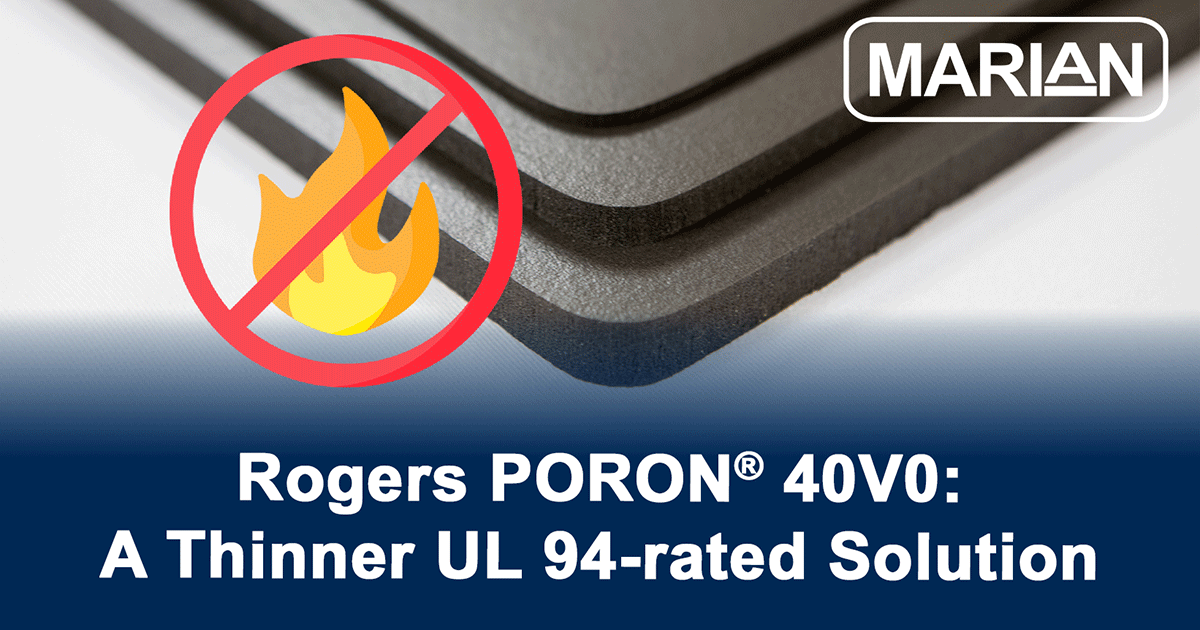

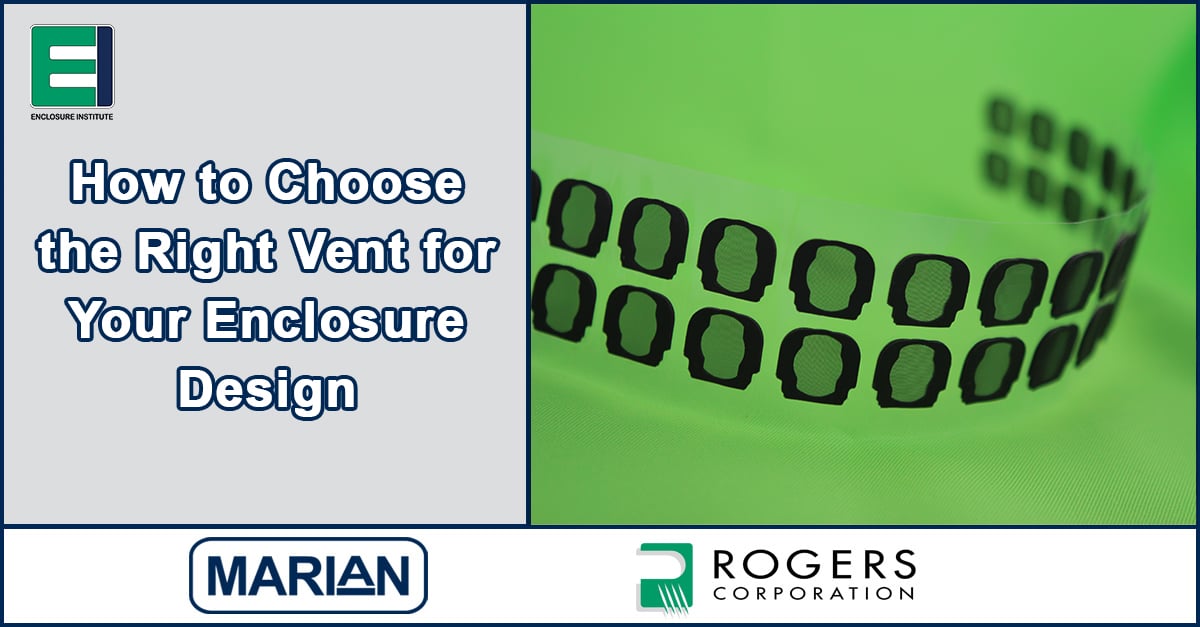
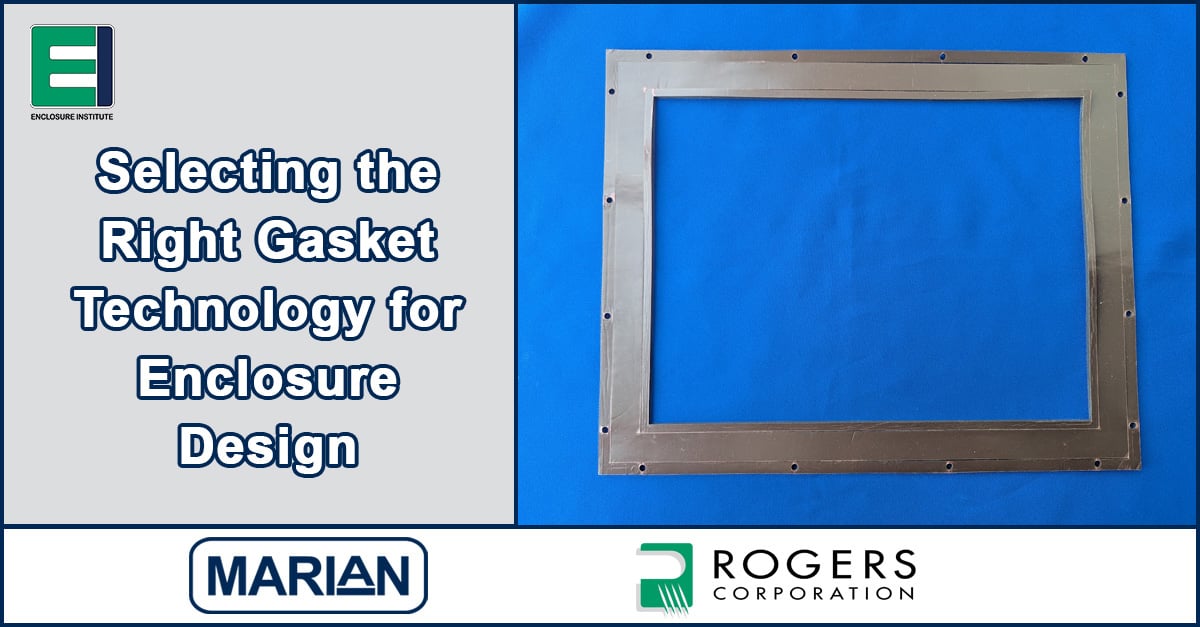
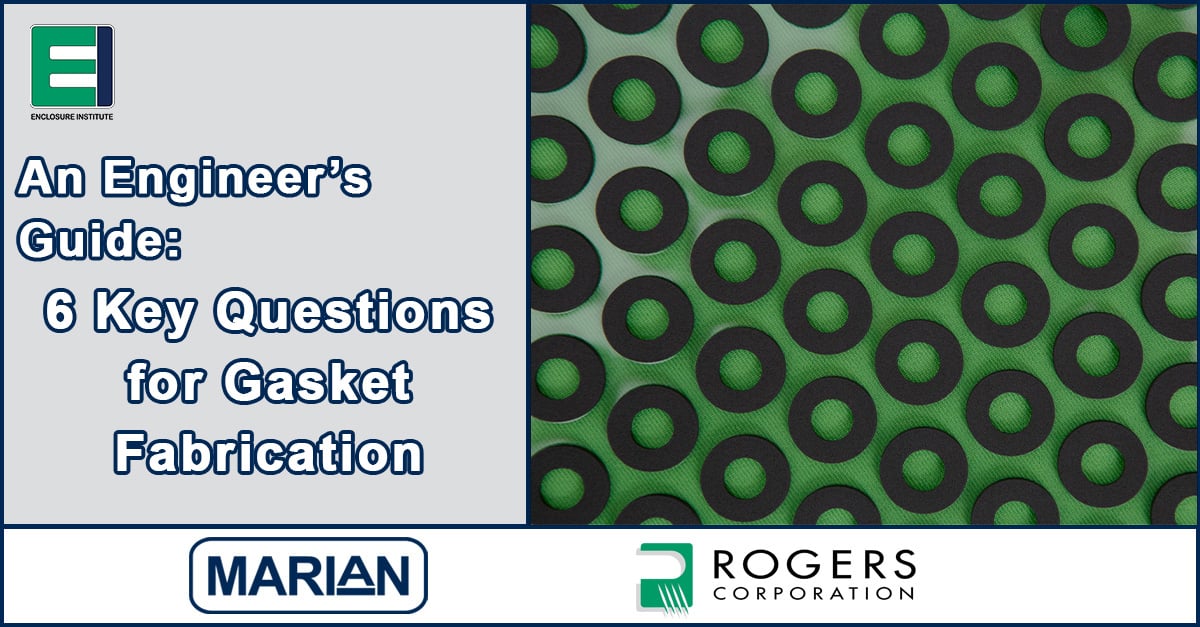
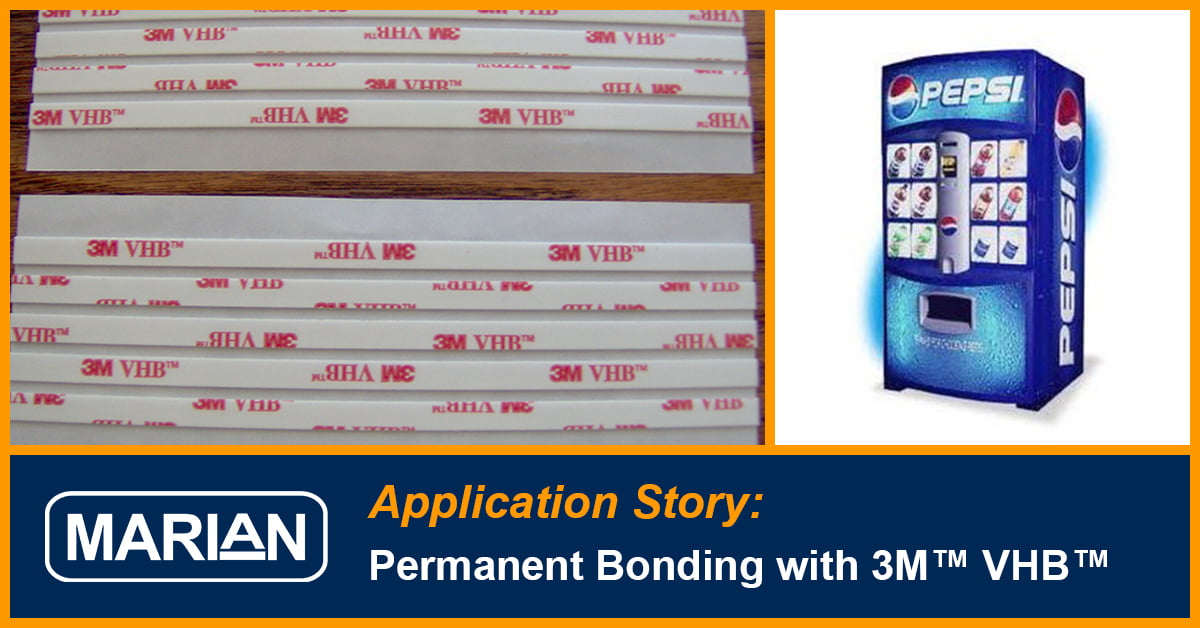
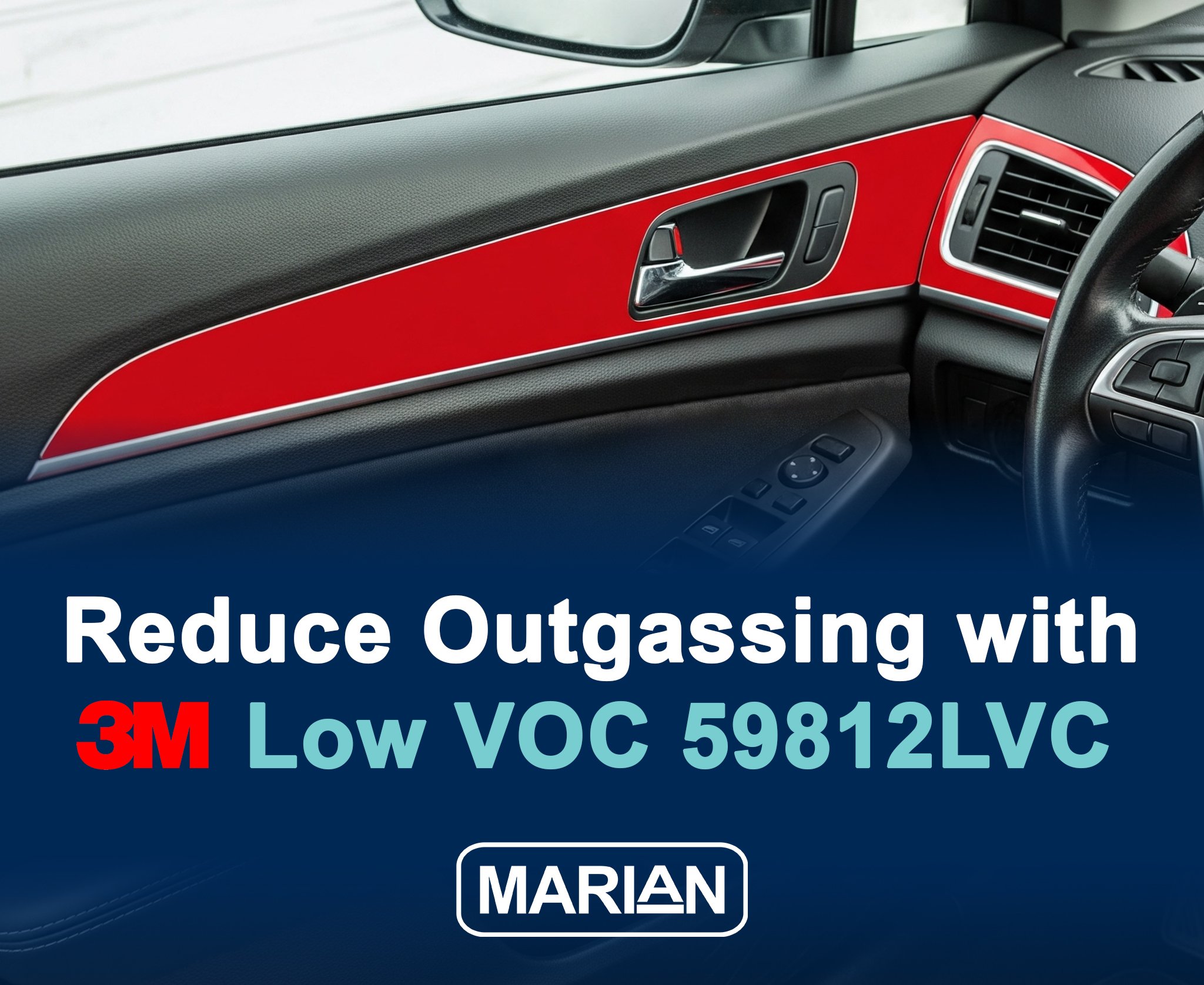
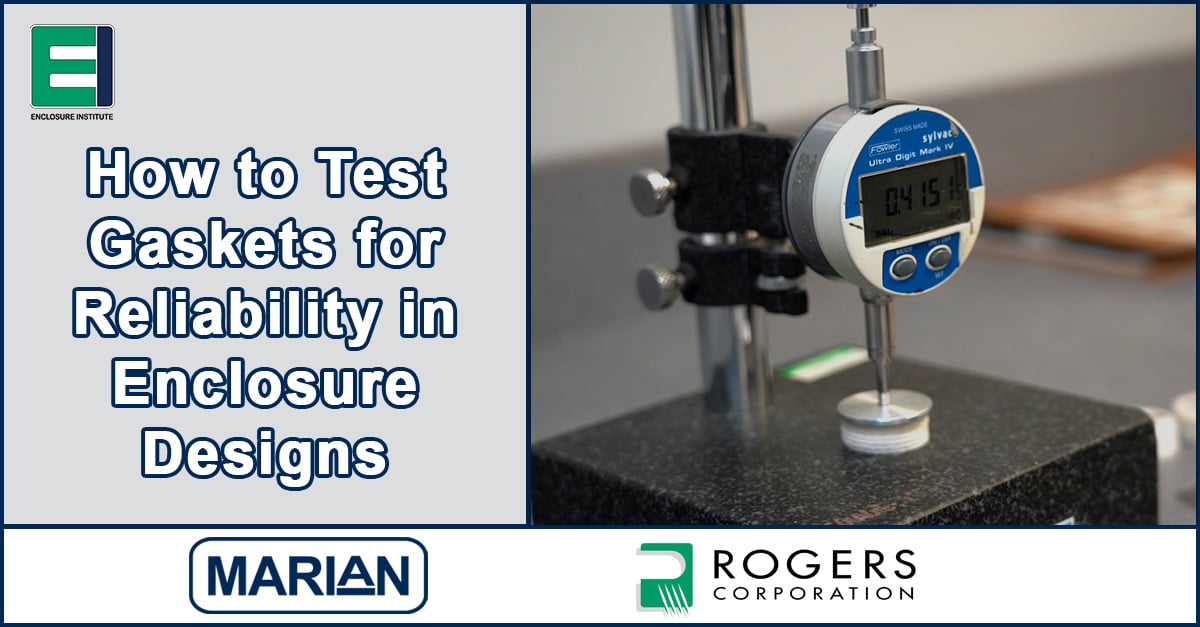
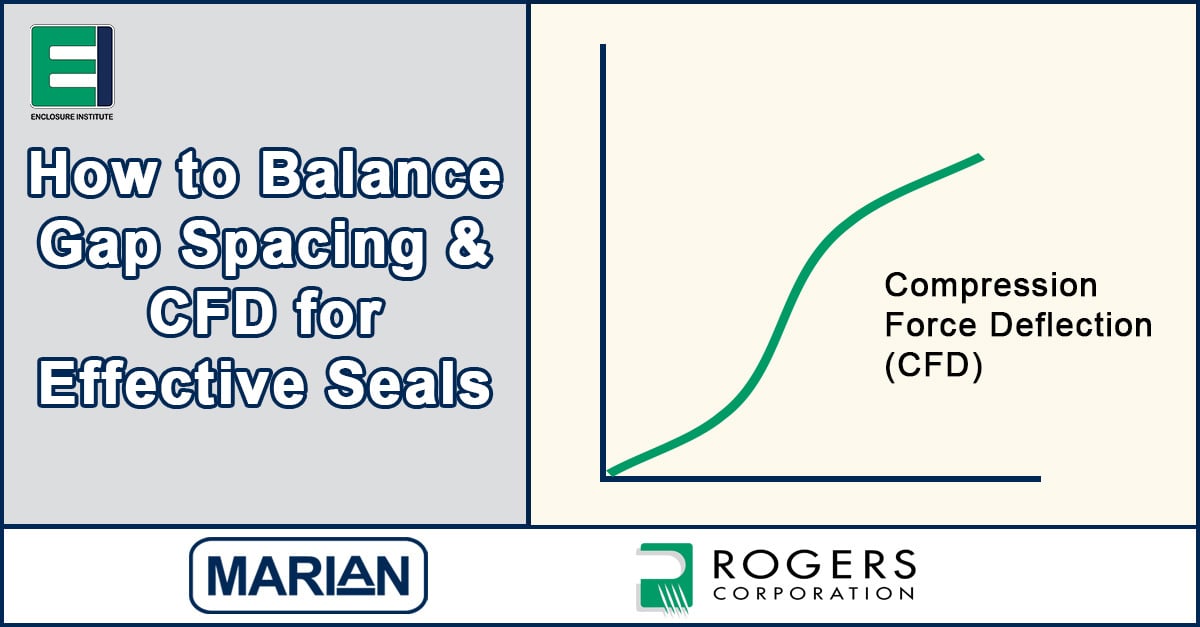
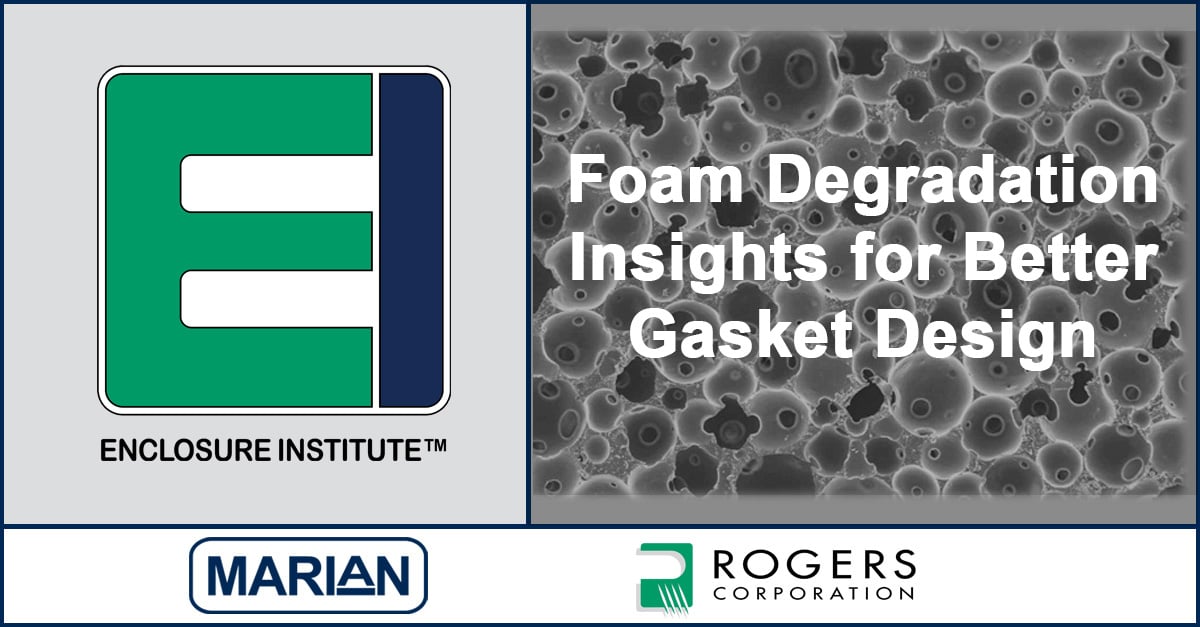
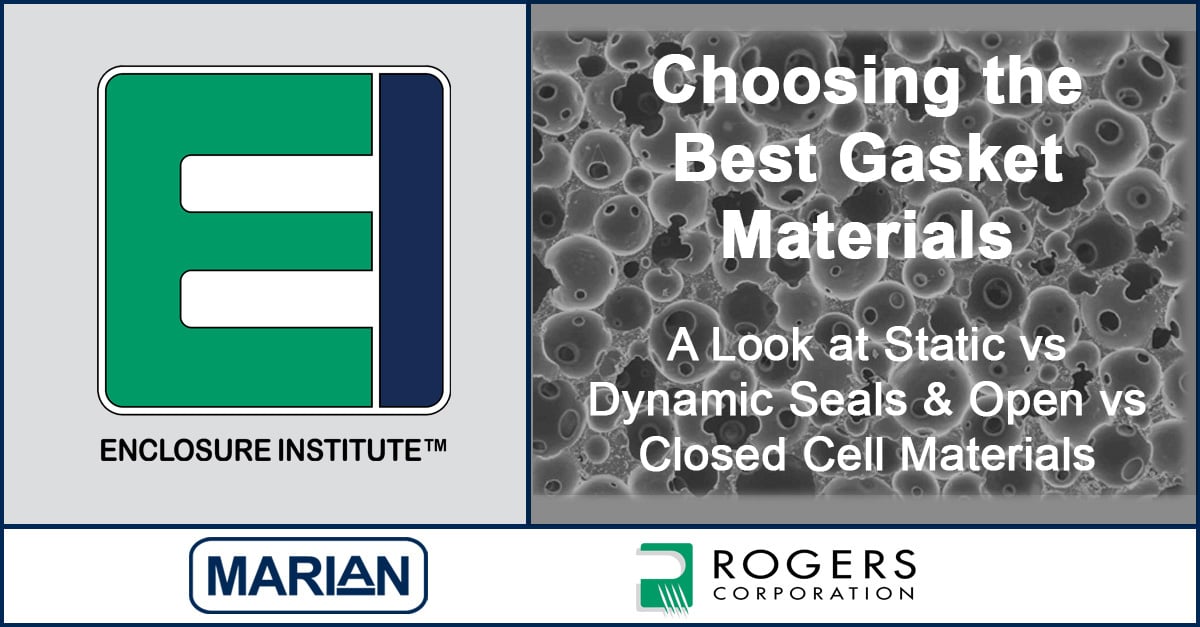
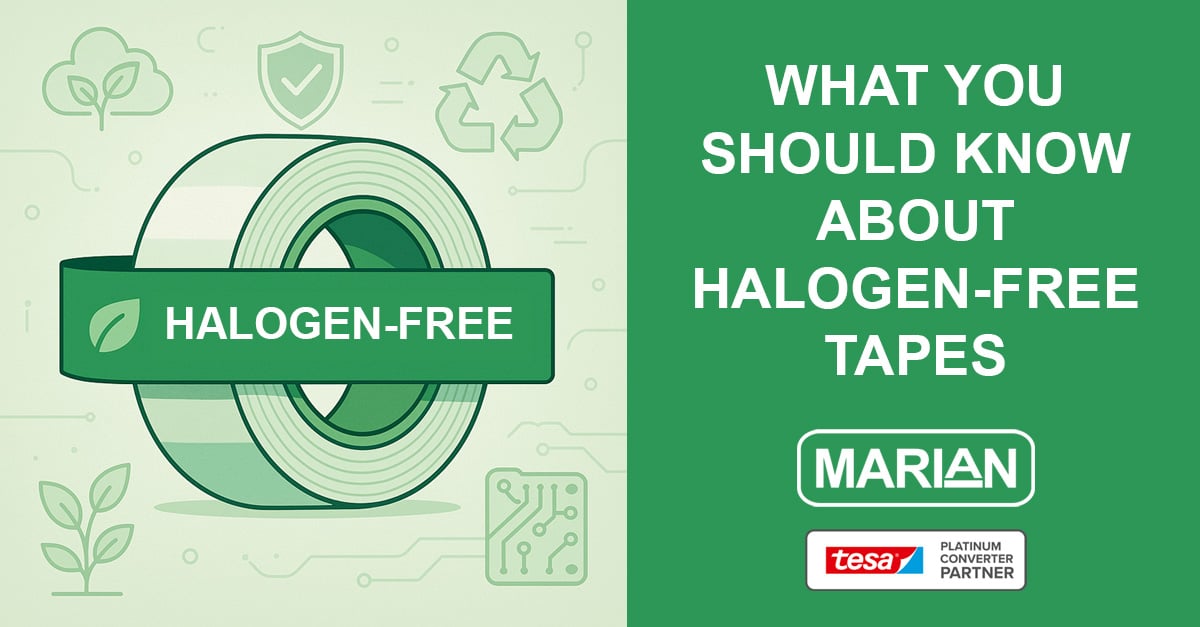
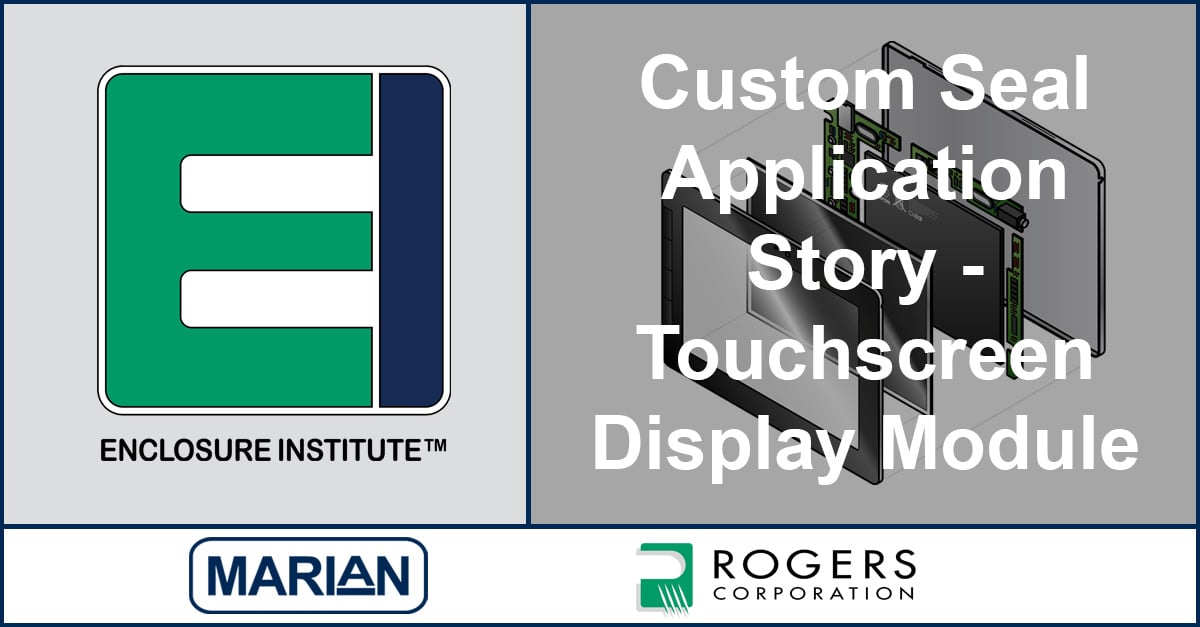

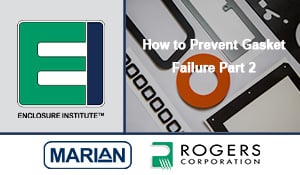
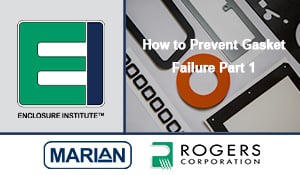
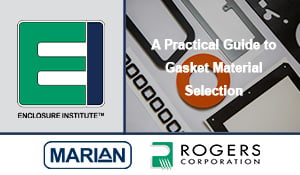
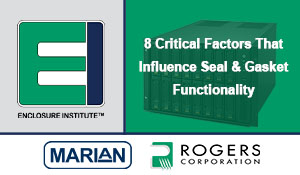
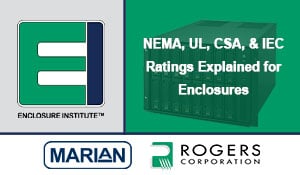

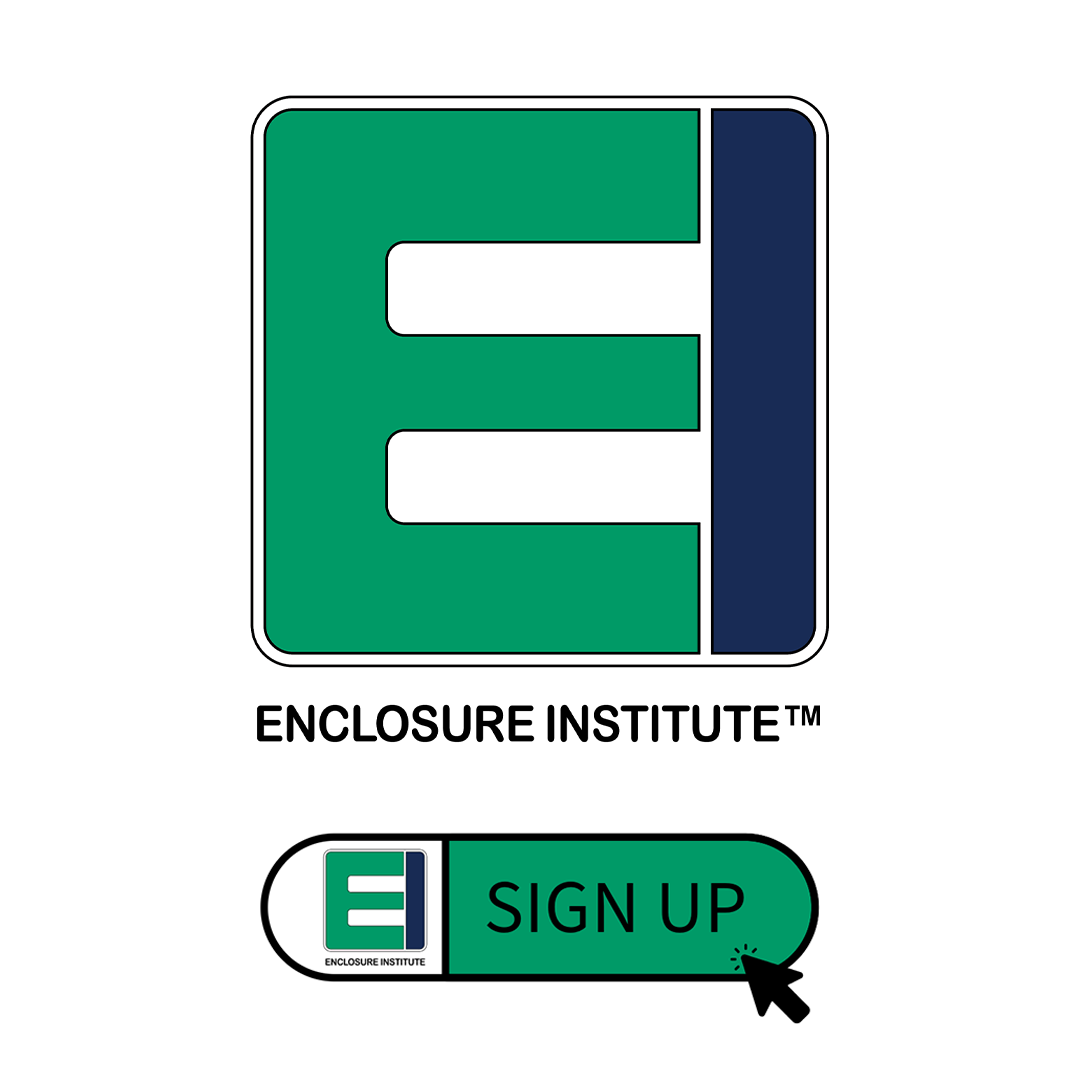
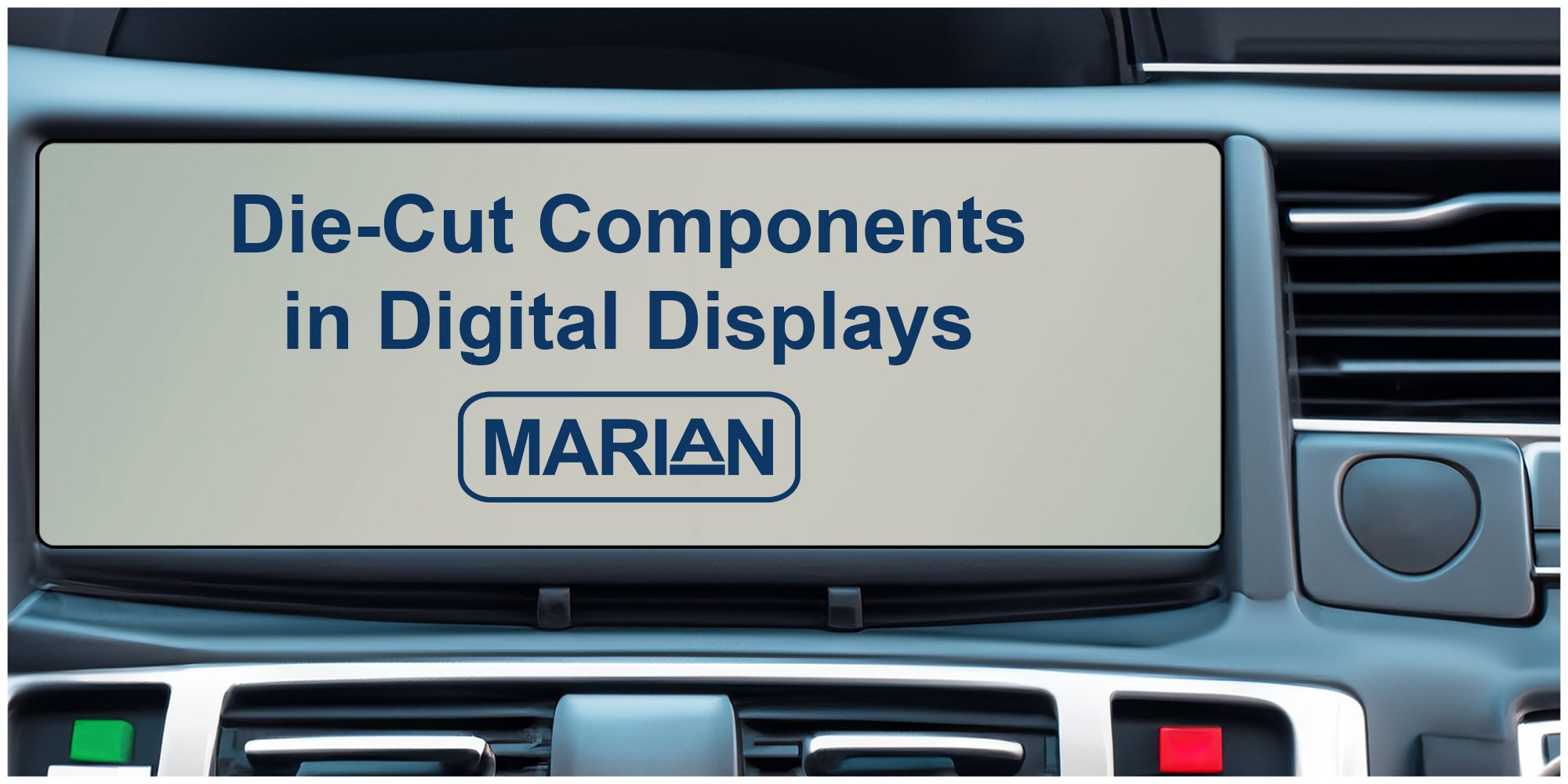

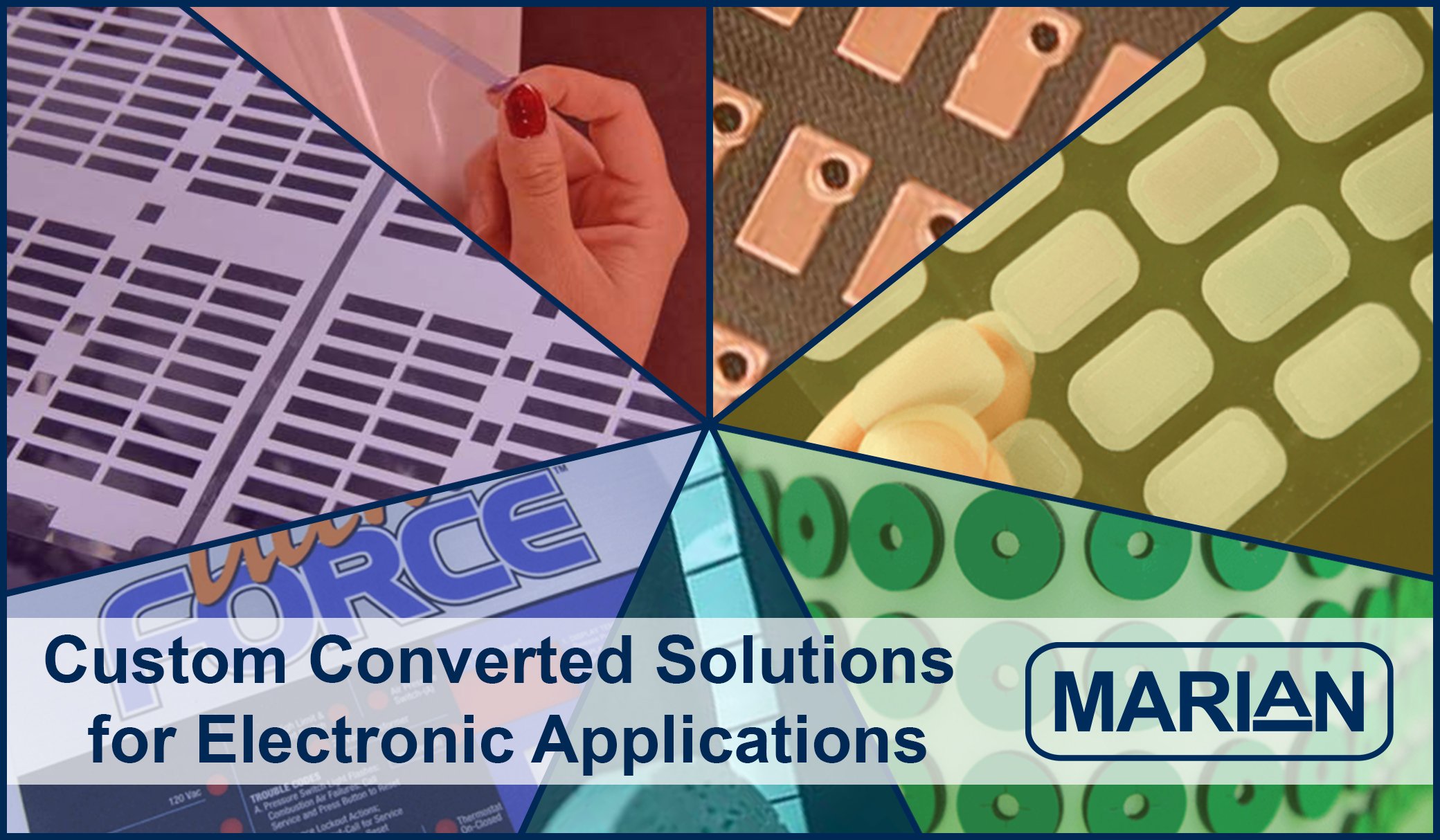
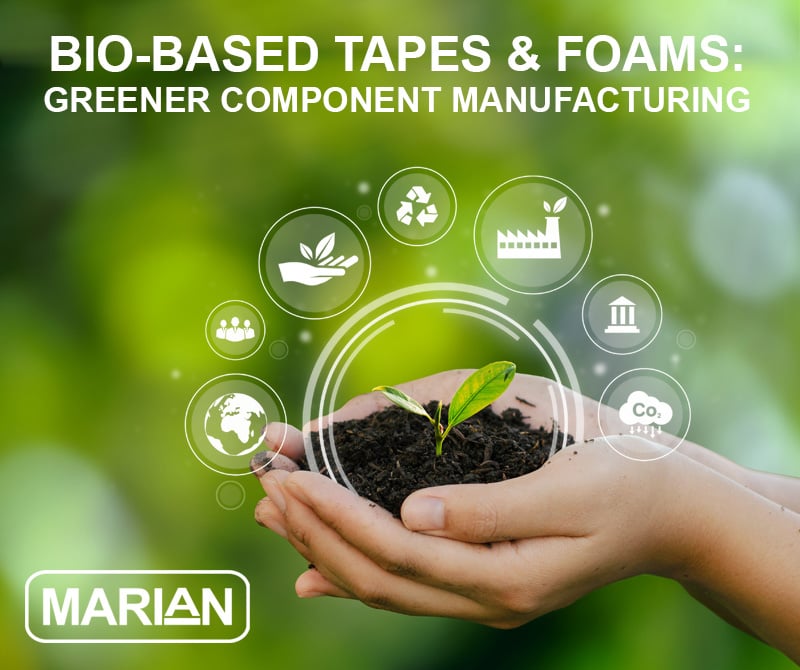

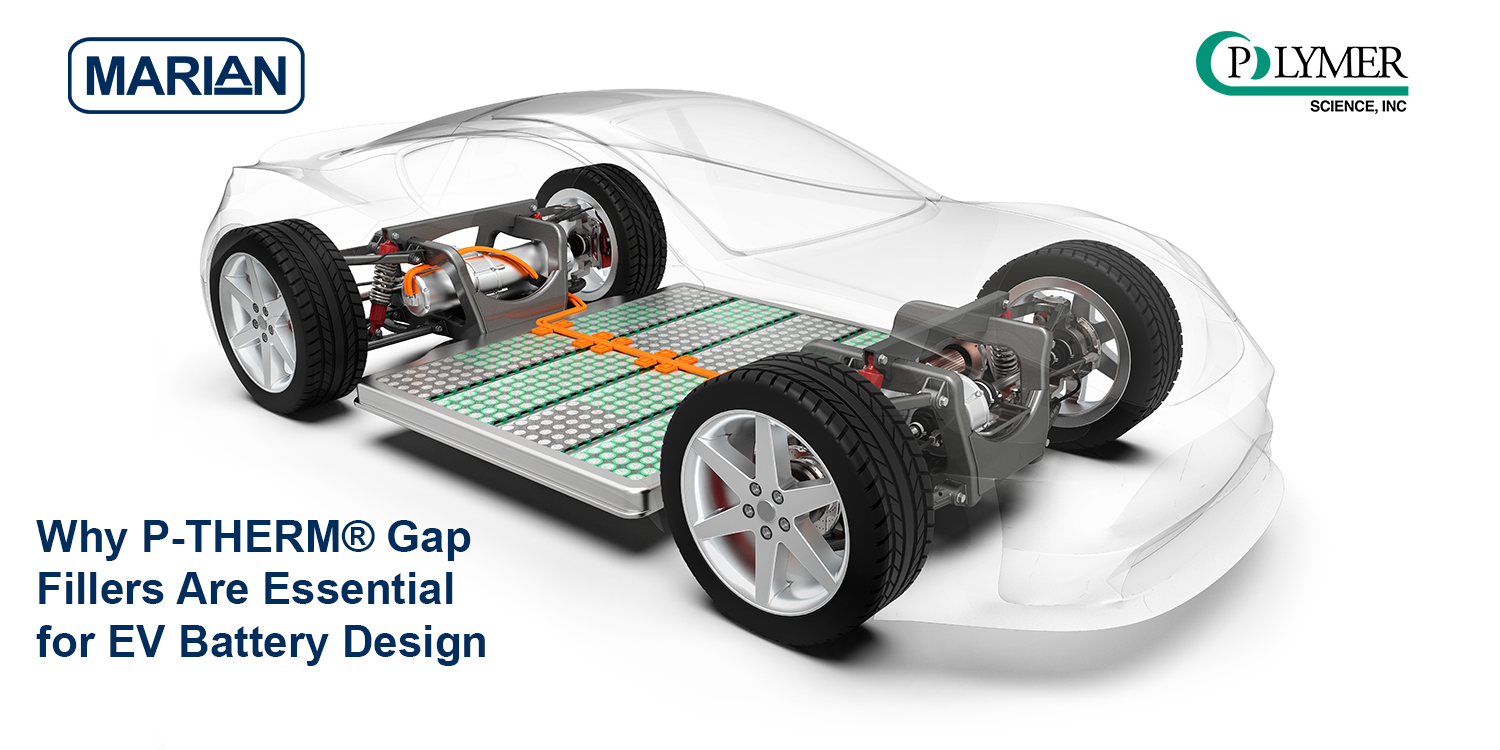
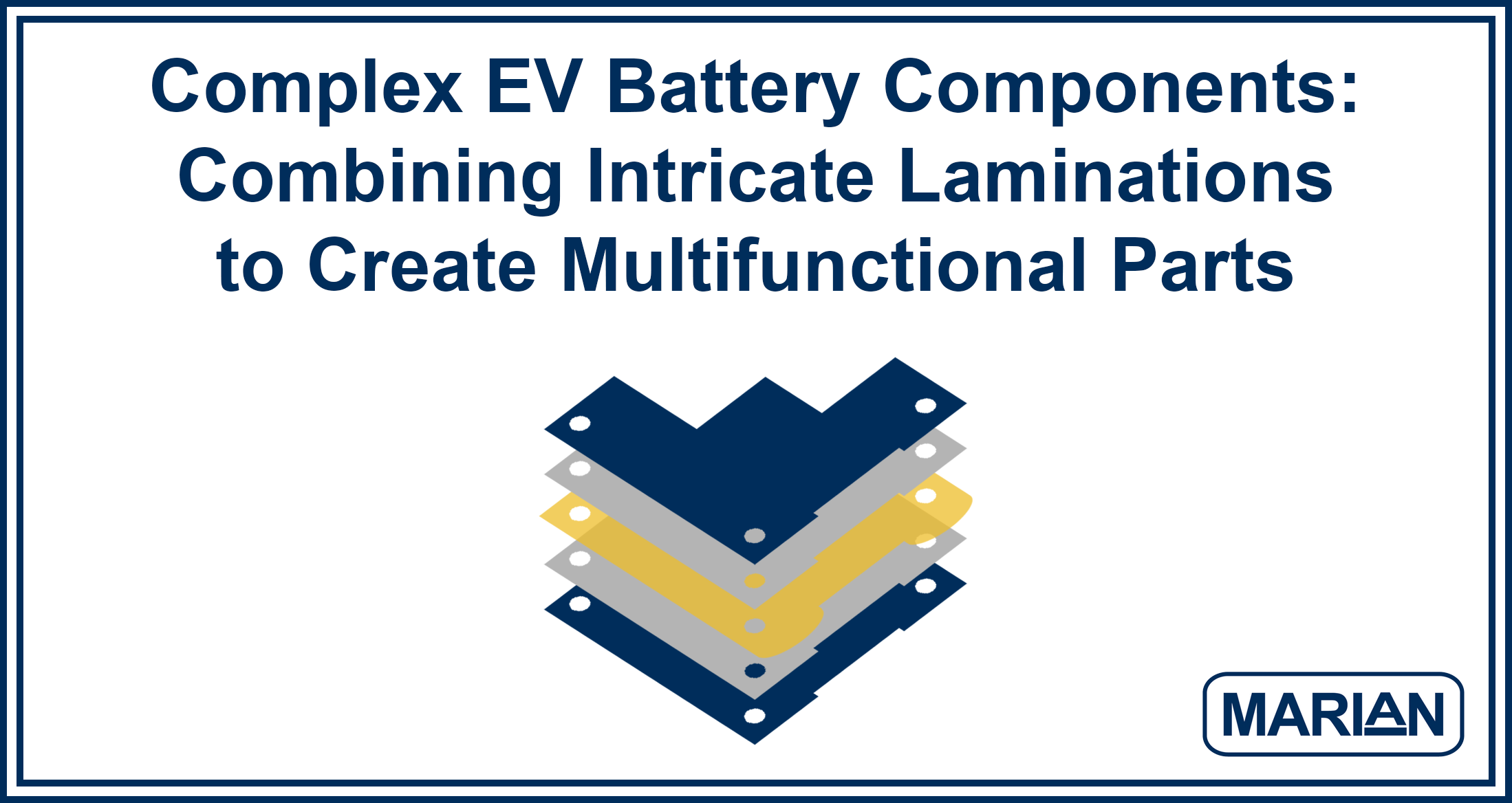
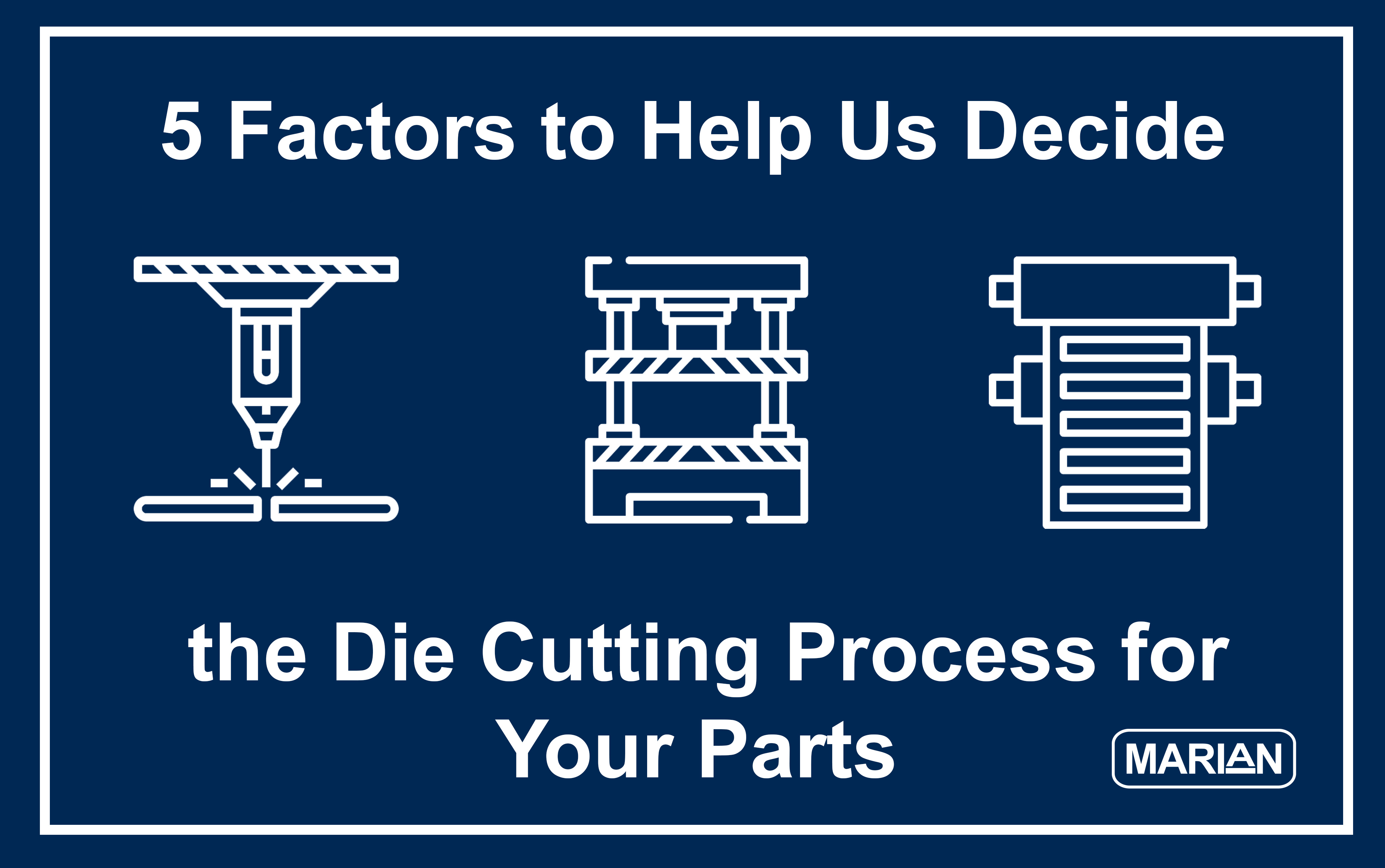
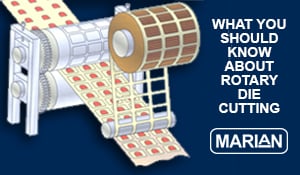
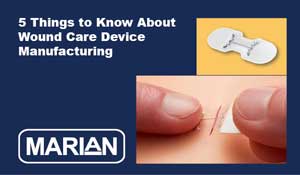
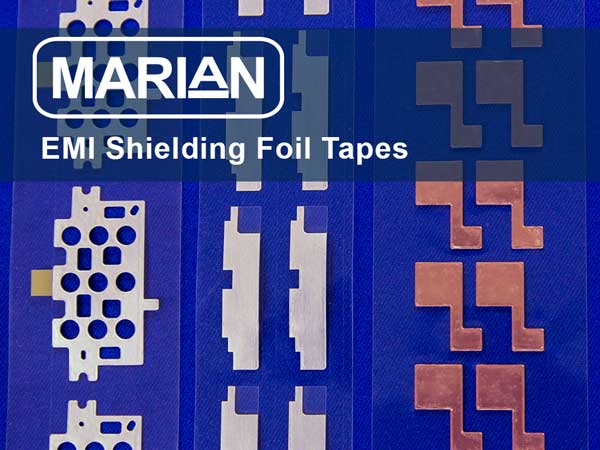
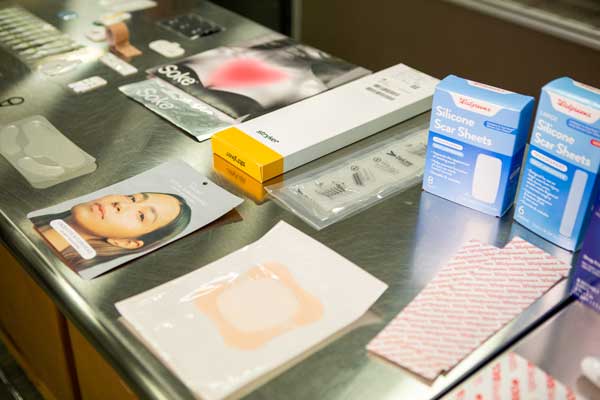
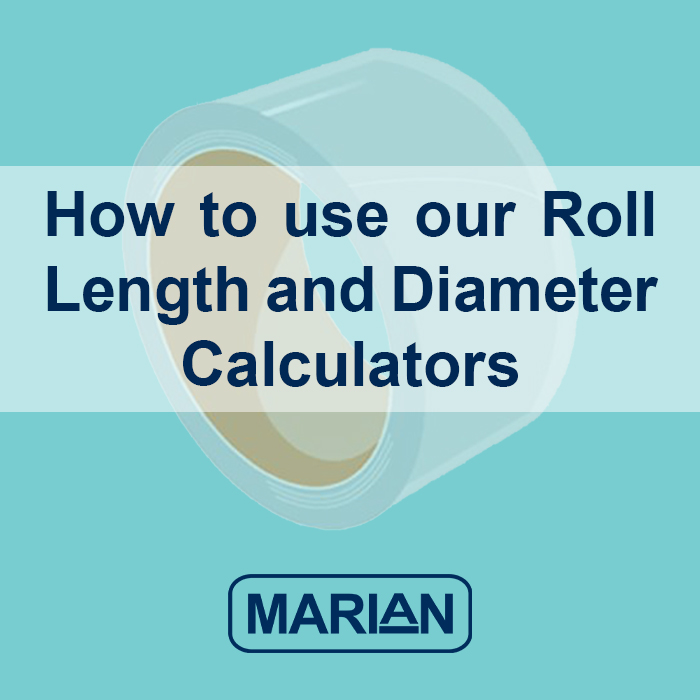
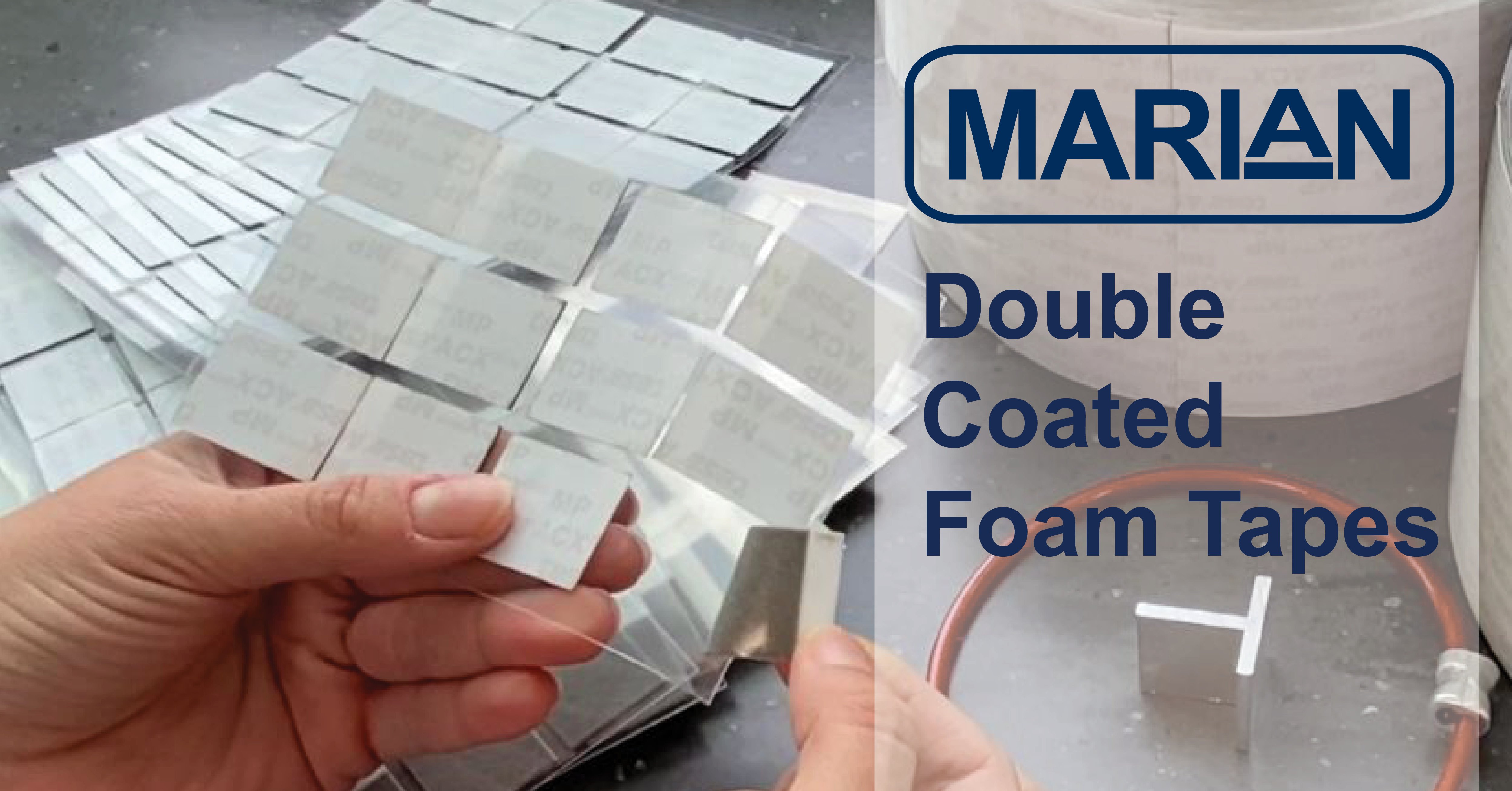
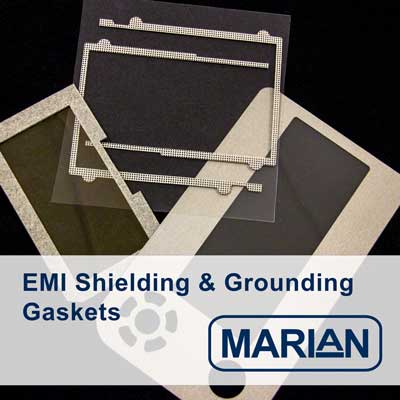
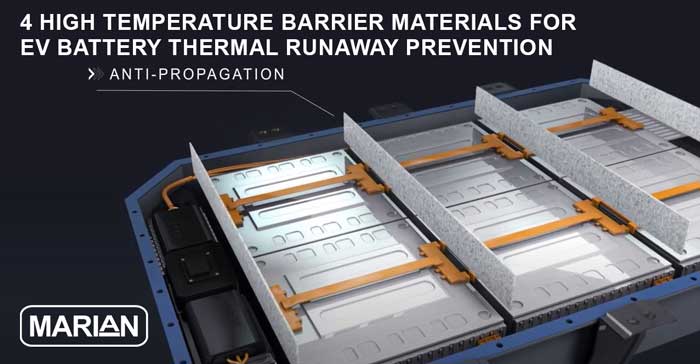

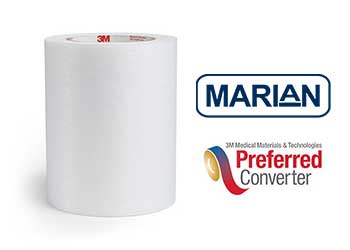

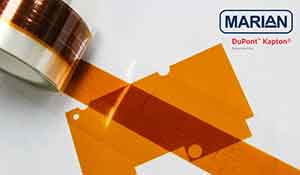
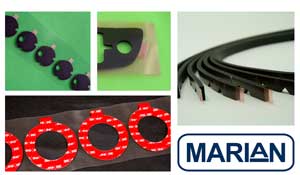
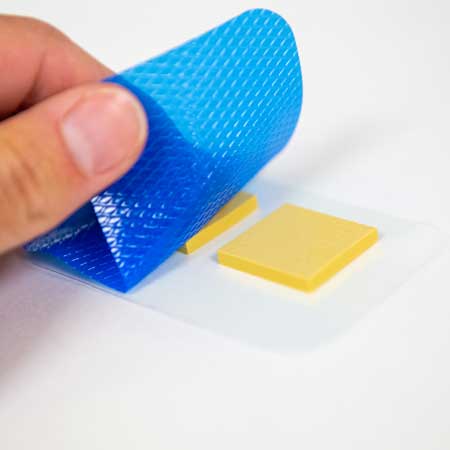

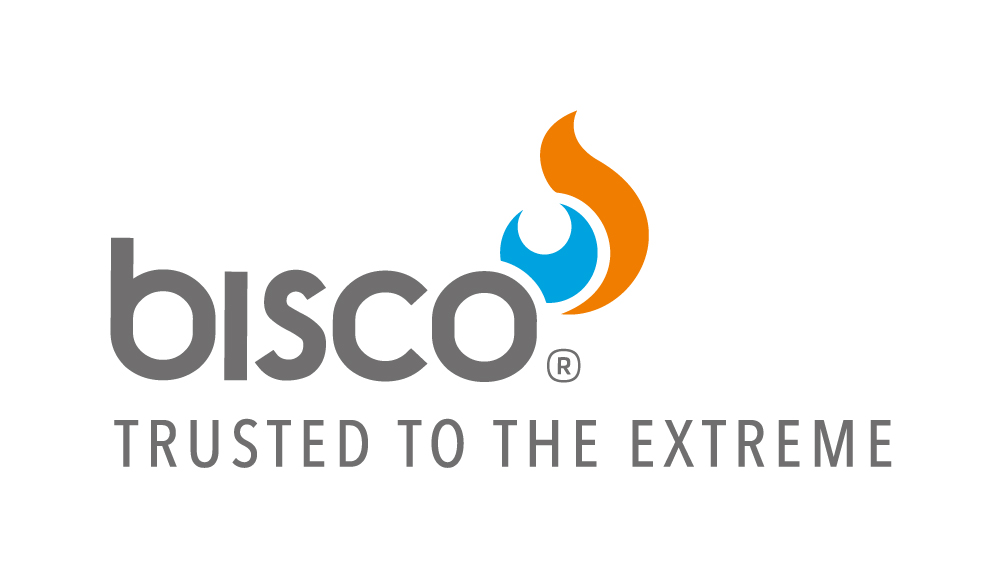
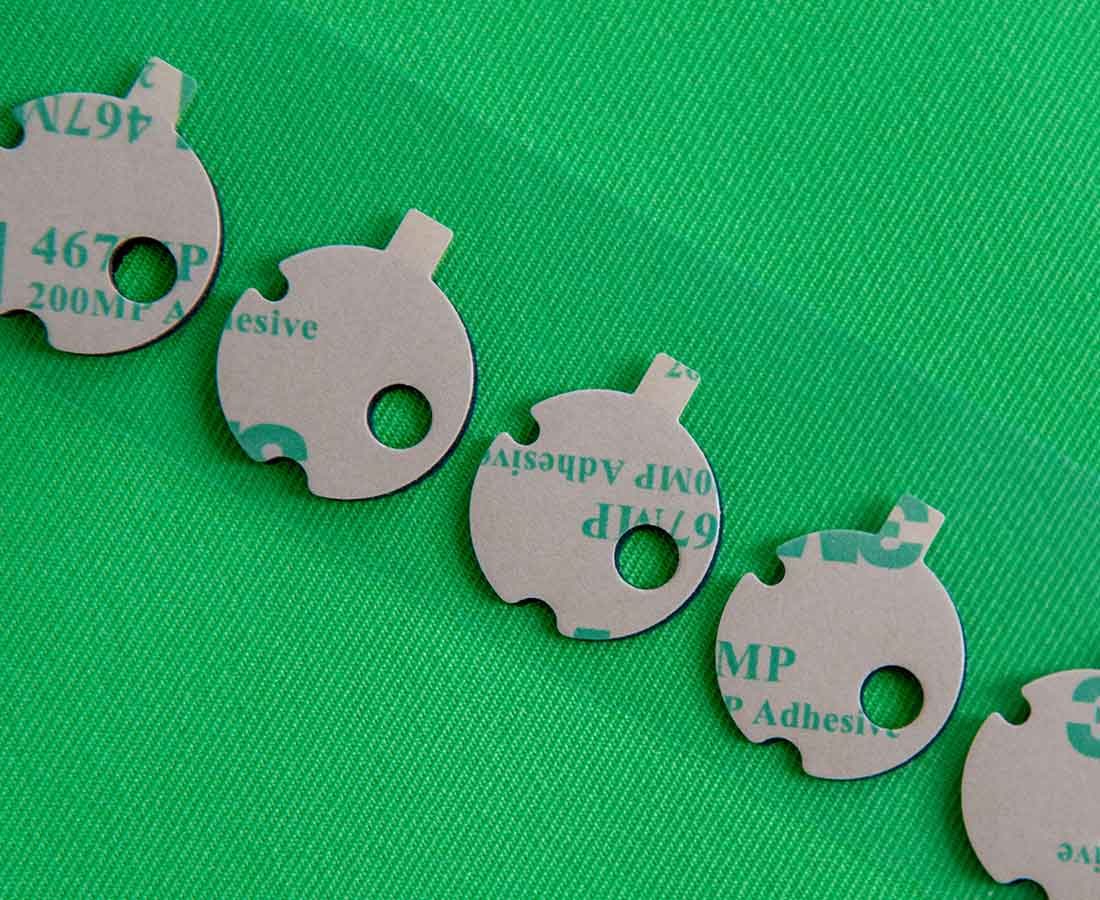
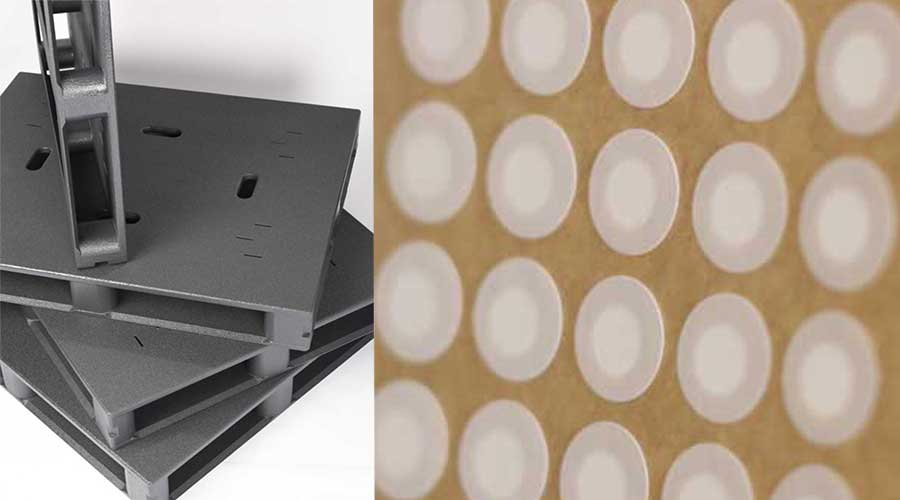
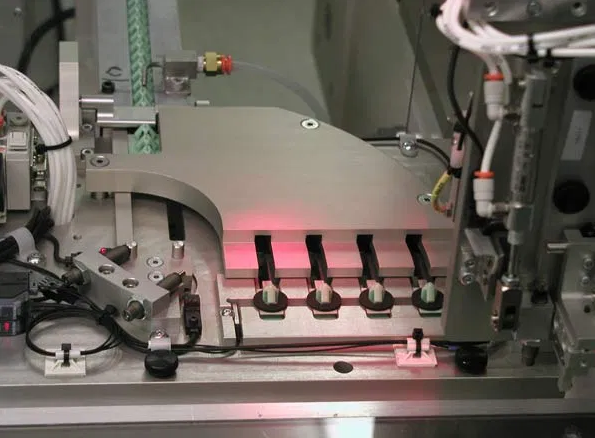
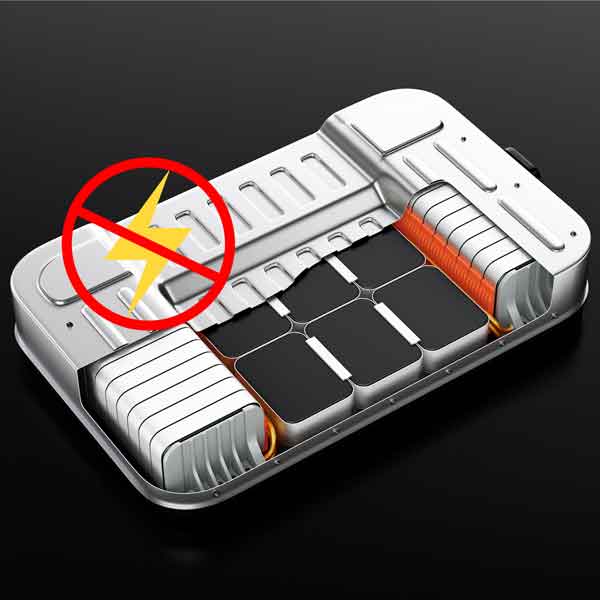
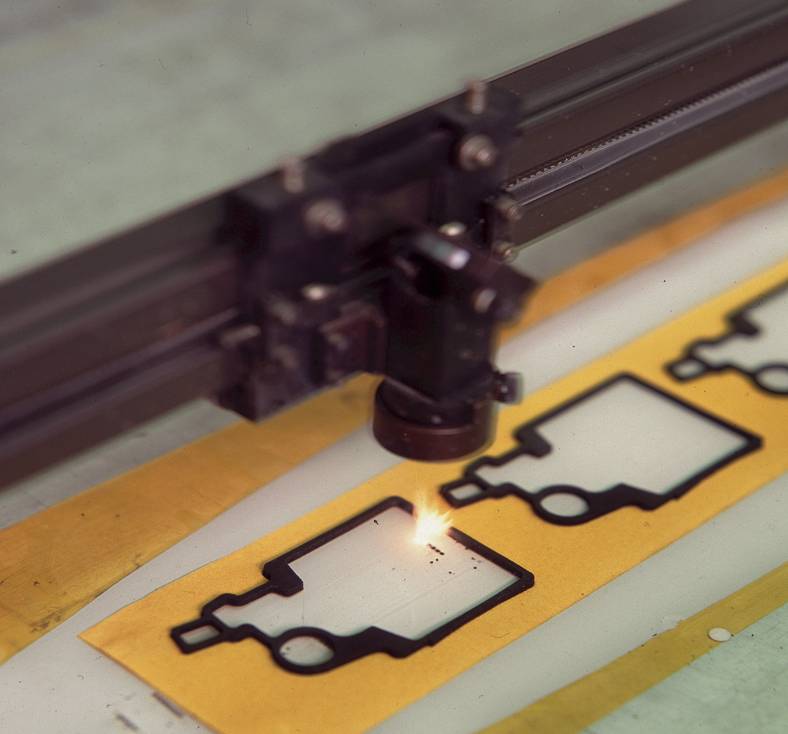
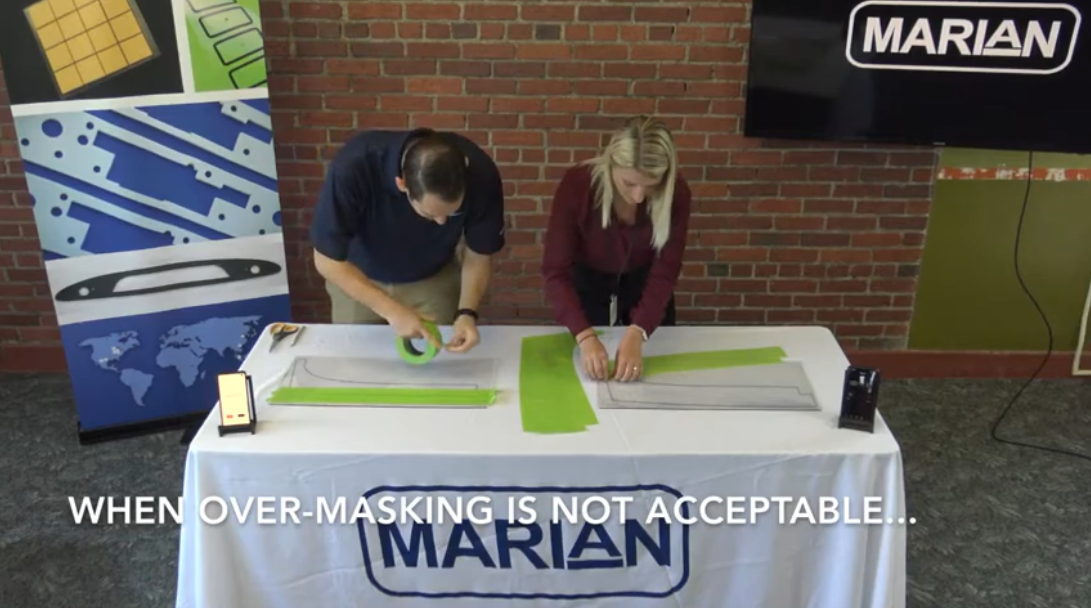
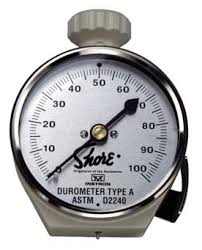
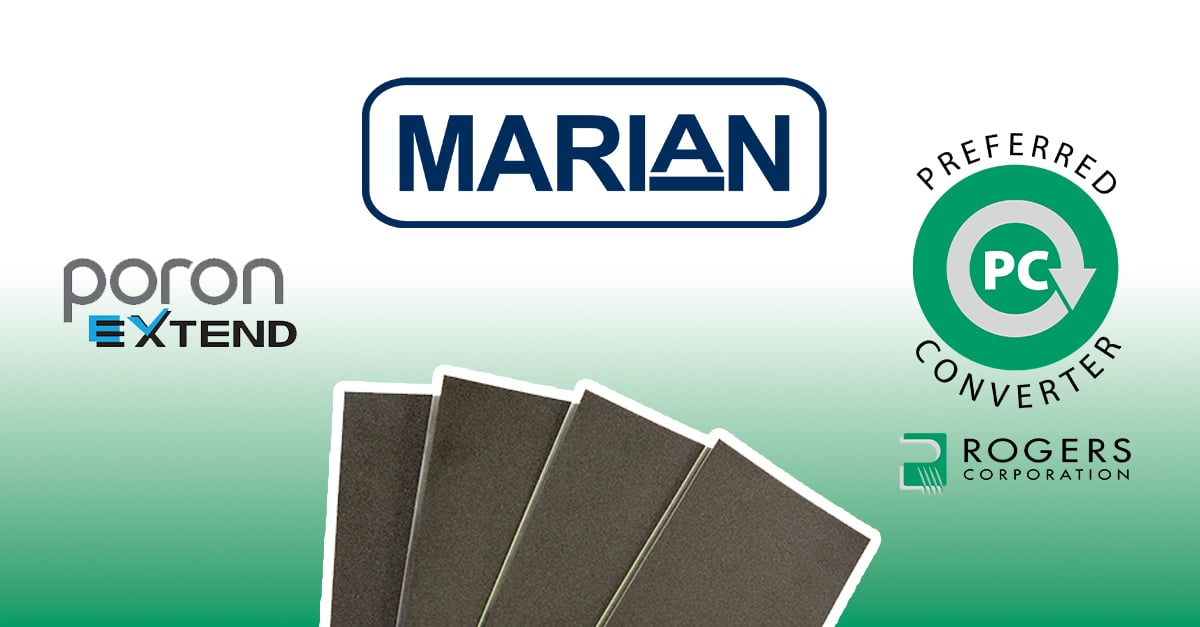


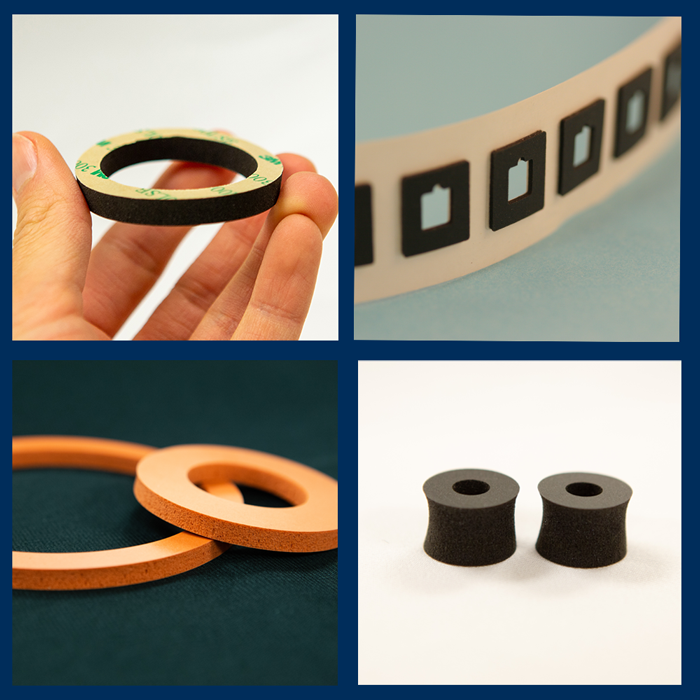
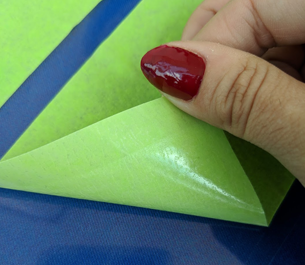
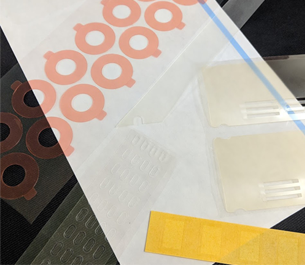

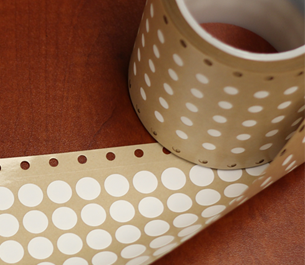
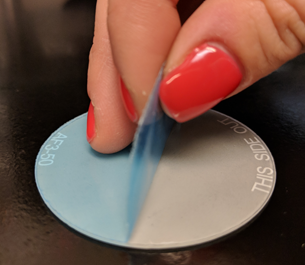
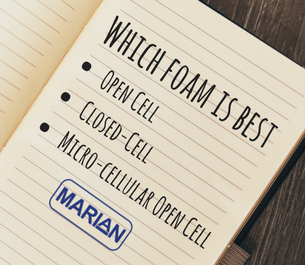
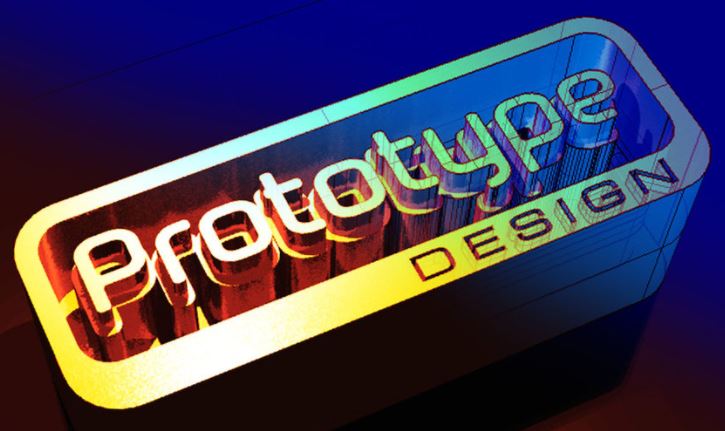


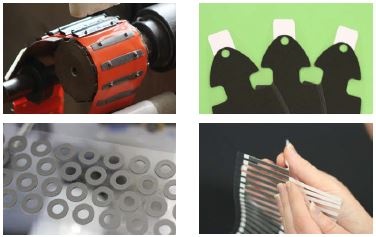
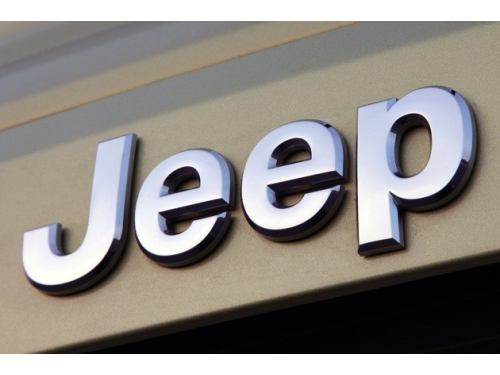
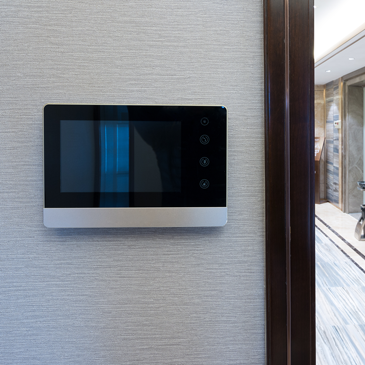
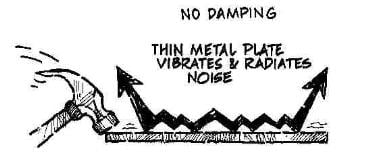
.png)
